Sustainability – more than just a buzzword!
At CEMS, sustainability is more than just a buzzword – it's the foundation! We offer tailor-made solutions that not only help your business grow economically but do so in a way that aligns with responsibility towards the environment and the people we impact.
We see the future in sustainability The sustainability agenda is evolving rapidly – and so are we. Our dynamic platform is designed to keep pace with changing demands and regulations, ensuring your business stays ahead. Whether it's new legal requirements or market developments, you can trust CEMS to keep you updated and in compliance.
Everything in one place CEMS has the complete package. With our precise and innovative tools, we make it easy to create a customized ESG report that elevates your business to the next level. We combine in-depth analysis with user-friendly technology, making complex data easy to understand and accessible. This means you can make informed decisions that not only strengthen your bottom line but also contribute to a sustainable future.
Data-driven decisions with real impact At CEMS, our climate accounts are not just reports – they are strategic tools that give your company a deeper understanding of how you can reduce your environmental footprint. We help you make responsible, data-driven decisions that positively impact the environment and enhance your business's competitiveness. We believe that responsibility today creates a sustainable future tomorrow.
Top-notch user-friendliness From start to finish, our platform is designed to be simple and efficient for everyone – whether it’s your employees, suppliers, or auditors. Our system ensures that complex processes are made easy and manageable, so you can focus on what really matters: making a positive impact.
What is an SME?
SME stands for "Small and Medium-sized Enterprises."
It is a category of businesses defined by specific criteria regarding the number of employees, revenue, and total assets.
The Importance of SMEs in Business
For business owners, it is essential to determine if their company falls under the SME category. Why? There are various financing and support schemes specifically targeted at SMEs based on the EU's definition. Additionally, accounting rules and documentation requirements can vary depending on whether a company is classified as an SME.
EU's Definition of SMEs
The EU differentiates companies based on their size, including the number of employees, revenue, and total assets.
In summary, according to the EU, SMEs are defined as companies that fall within the categories of small and medium-sized enterprises. This means they typically have between 10 and 249 employees, and their revenue or total assets range between €10-50 million.
Link to SME Denmark website: SME Denmark
Can you save money by using CEMS?
If you, as a user, register CO2e reductions that your auditor approves, this can be done through the user's accounts, where you can gain deductions for compensation.
The value of compensation can vary and depends on several factors, including the amount of registered CO2e reductions and the applicable tax regulations. We recommend consulting your auditor or tax expert for specific information on how to take advantage of these deduction opportunities.
Please note that cash payments directly from CEMS are not possible. CEMS functions as a platform for registering and documenting CO2e reductions and offers a transparent process for compensation.
Can you sell an overcompensation?
Yes, you can sell an overcompensation, provided it is approved by the auditor and thus can be sold. Overcompensation has a market value, which it can be traded for. The market value is variable and is approximately 1,500 DKK per ton.
See link from Klimarådet's (The Danish Council on Climate Change Secretariat) webpage: https://klimaraadet.dk/da/virkemiddel/co2-pris-i-offentlige-projekter-konsistent-med-70-procentsmaalet
CEMS can generate a digital certificate that the user can utilize to sell their accredited CO2e savings. There's a small fee to CEMS for using this model.
What is internal climate compensation?
Internal climate compensation: Sustainability in the company's DNA
What is internal climate compensation? Internal climate compensation refers to a company's own measures and initiatives to reduce or offset its internal greenhouse gas emissions. This involves supporting projects or implementing measures that directly contribute to reducing the overall amount of CO2e or other greenhouse gases that the company generates.
Sustainable business principles: In a time where companies face increasing demands for sustainability, internal climate compensation constitutes a fundamental part of a company's DNA. It involves proactively identifying and implementing solutions that reduce the economic impact and promote a green business model.
Integration in accounts: Companies can incorporate internal climate compensation into their accounts by documenting and communicating their sustainability efforts. This step not only demonstrates accounting responsibility but also positions the company as a leader in sustainable business practices.
Benefits of internal climate compensation:
- Environmental protection: Reduce the company's internal climate footprint and contribute to environmental protection.
- Sustainable image: Strengthen the company's reputation by demonstrating a commitment to internal climate compensation.
- Accountability: Incorporate internal climate compensation into the accounts to demonstrate the company's dedication to sustainability.
We encourage companies to embrace the concept of internal climate compensation as a crucial driver for a sustainable future. By implementing internal initiatives, companies can actively contribute to a more sustainable and environmentally friendly business practice.
What is online accreditation?
What is online accreditation?
Introduction to Efficient Business Practices
Online accreditation represents an innovative approach to the business world, where CEMS facilitates and your auditor approves a digital accreditation process. This advanced system is designed to optimize and streamline the verification process by bringing it into the digital era.
Accreditation with CEMS:
CEMS is a platform that accredits CO2 equivalents online, enabling an efficient and digital approval process for businesses and organizations. By integrating technology and expertise, CEMS offers a platform that creates a seamless documentation and accreditation experience for organizations and businesses.
Auditor Approval:
An essential dimension of online accreditation is approval from your company's auditor. This process ensures that accreditation standards are met and that the company's practices adhere to the necessary criteria. Thus, auditing plays a central role in confirming the accuracy and credibility of the online accreditation process.
Benefits of online accreditation:
- Efficiency: Digital accreditation reduces the time and resources typically required by traditional methods.
- Transparency: The digital process provides full transparency and traceability throughout the accreditation process.
- Auditor Validity: Approval from your auditor adds an extra layer of credibility and ensures compliance with standards.
What this means for your business:
By integrating online accreditation with CEMS and auditor approval, your company positions itself as a proactive participant in the digital transformation of business practices. This not only optimizes your processes but also enhances your company's reputation by demonstrating commitment to quality and compliance with industry standards.
Consulting Services
If you would like a meeting with a consultant who can assist you in getting started with the use of CEMS and potentially provide advice and guidance in CO2e emissions or reduction, LCA calculation, or ESG reporting, please contact us for a discussion. You can purchase the consultancy service on the Webshop under products.
What is climate accounting?
Climate ESG Monitoring Systems (CEMS) is designed to calculate the climate impact, including CO2 equivalents (CO2e), enabling the user to compute the necessary data for the preparation of a climate account. CO2e is a metric unit that combines all greenhouse gas emissions into a common measurement based on their global warming potential.
CEMS, measuring CO2e emissions, is crucial for companies and organizations looking to quantify and report their contributions to climate change. This is a key component of sustainability reporting and part of efforts to reduce overall climate impact.
A climate account, also known as an environmental account or sustainability report, is a method for quantifying and reporting an entity's or organization's total climate impact and environmental footprint. The purpose of a climate account is to provide a detailed picture of the greenhouse gas emissions originating from various activities or processes within a given timeframe.
A typical climate account includes measuring and reporting emissions from sources such as:
-
Direct emissions (Scope 1): This includes direct emissions from the company's own activities, such as fuel use in production processes and transportation.
-
Indirect energy-related emissions (Scope 2): This covers indirect emissions from externally purchased electricity, steam, or heat.
-
Other indirect emissions (Scope 3): This includes all other indirect emissions, such as suppliers' activities, transportation of goods, waste, employee commuting, purchased goods and services, and end-use of products.
The purpose of a climate account is not only to report emissions but also to identify opportunities for reduction and sustainability improvement. It helps organizations understand their environmental impact and make informed decisions to reduce their climate impact over time. Climate accounts are an important part of businesses' and society's efforts to move towards more sustainable and climate-friendly practices.
The process of reducing CO2e emissions can involve several measures, such as:
-
Energy efficiency: Implementing energy-efficient technologies and practices to reduce direct and indirect energy-related emissions.
-
Renewable energy: Increased use of renewable energy sources such as solar and wind energy to reduce dependence on fossil fuels.
-
Sustainable transportation: Promotion of sustainable transportation solutions, including electric vehicles or fuel-efficient vehicles, to reduce transportation-related emissions.
-
Waste reduction: Implementation of waste reduction programs and increased recycling to decrease emissions from waste management.
-
Supply chain optimization: Collaborating with suppliers to reduce emissions throughout the supply chain.
The effort to reduce CO2e emissions is a central part of businesses' and organizations' responsibility to contribute to combating climate change and meet sustainability goals.
The taxonomy of the EU
The EU taxonomy is a classification system based on common definitions of sustainability. This means that when an economic activity is environmentally sustainable, it will make a significant contribution to at least one of the EU's climate and environmental goals.
The taxonomy introduces the following key elements for companies and financial institutions:
- Six environmental objectives that economic activities must substantially contribute to in order to be classified as sustainable.
- Four conditions that must be met to define whether an economic activity is sustainable.
- For each of the six environmental objectives, technical screening criteria are established, specifying conditions for all economic activities and determining whether the nine activities of the Danish Standards Foundation constitute a significant contribution to an environmental objective and do not harm the other environmental objectives. These minimum conditions must be met and documented for an economic activity to be considered environmentally sustainable.
- Mandatory reporting requirements for companies, which among other things, must disclose the proportion of their revenue generated within business areas that are sustainable according to the taxonomy.
- Mandatory reporting requirements for financial institutions, which must disclose the proportion of their total investments that are sustainable according to the taxonomy.
The taxonomy of the EU thus translates the EU's climate and environmental goals into a set of criteria that determine when an economic activity is considered environmentally sustainable
An economic activity is defined as goods or services offered on a market. For example, construction is an economic activity for a company. The execution of the construction project involves economic activities that include both physical goods, such as windows, and services such as consulting.
Companies can use the taxonomy's classification to showcase and communicate their sustainable initiatives, while investors can use the taxonomy to find companies to invest in that can demonstrate they are engaged in sustainable practices.
If you want to read the EU taxonomy regulation, see:
(EU) 2020/852.
Source: Dansk Standard
What are CSRD and CSDDD?
CSRD – Legal requirements for corporate sustainability reporting
CSRD is an EU directive that requires certain companies to report on their work with sustainability. The first companies must report from the financial year 2024. Find out more about the rules and how they can affect your company, even if you are not directly covered.
What is CSRD?
The Corporate Sustainability Reporting Directive (CSRD) is an EU directive that mandates corporate sustainability reporting. From 2024 onwards, all large publicly listed companies must report on sustainability according to specific standards. These standards are referred to as ESRS. The regulations will encompass more companies in the coming years.
The purpose of the new regulations is to ensure that companies in both Denmark and other EU member states report on sustainability in the same manner.
It is intended to help increase transparency, making it easier for investors and other stakeholders to understand a company's sustainability initiatives when they are looking to invest or enter into new partnerships.
It will also help companies to be able to document sustainable efforts in connection with communication and marketing, so that greenwashing is avoided.
Which companies are required to report and when?
-
2024: Large publicly listed companies with more than 500 employees
-
-
2026: Small and medium-sized publicly listed companies

Voluntary standards for SMEs
EU udarbejder også et sæt frivillige standarder målrettet SMV’er. The EU is also developing a set of voluntary standards aimed at SMEs. Companies not covered by the CSRD can use these standards.
The standards will be based on the disclosure requirements that it is expected that covered business customers will impose on their suppliers. In this way, the voluntary standards are a good starting point for the many companies that are not directly covered but would like to get started with or stay ahead of ESG data requirements.
Learn more about ESRS
All companies covered by CSRD will now be required to report according to a set of common European standards. There are a total of 12 standards that apply to all covered companies.
Read more about ESRS
Source: Virksomhedsguiden
Source: https://virksomhedsguiden.dk/content/temaer/baeredygtig-omstilling/ydelser/csrd-lovkrav-til-virksomheders-baeredygtighedsrapportering/62c314cd-4e5f-422c-9f55-6f43873fd25e/
The purpose of CSRD and the interaction with Danish legislation
With CSRD, the directive on corporate sustainability reporting, requirements are introduced for all large companies and all listed companies (with the exception of listed micro-enterprises) to report on sustainability according to European standards in the management report of the annual report and digitally submit the information.
1.1. What is the purpose of CSRD?
The purpose of CSRD is to strengthen the framework for companies' sustainability reporting. Sustainability reporting is considered to be absolutely central to business's work with the sustainable transition, and it is essential that the sustainability reporting becomes both relevant, credible and usable for the account users.
In order for financing and investments to be targeted at truly sustainable companies and projects, including companies that work purposefully to become sustainable, it is necessary that sustainable companies can be identified on the basis of specific data. At the same time, standardized sustainability data provides increased opportunities to do away with greenwashing, and to compare companies across sustainability issues and give companies that are ahead a competitive advantage. The aim is that investors, civil society actors and other stakeholders can better assess the companies' sustainability and channel funding and demand towards the companies that are most sustainable.
The covered companies are required to disclose significantly expanded and standardized information on various sustainability aspects, compared to the requirements imposed by the rules on corporate social responsibility reporting in Section 99a of the Annual Accounts Act. Sustainability reporting includes detailed requirements for companies' reporting on human and labor rights and other social aspects, management issues, as well as climate and environmental matters. Furthermore, auditors must henceforth provide an assurance statement on sustainability reporting with limited assurance, where, according to the current rules, only an opinion based on a consistency check is required.
The entire value chain
While the consolidation requirements for financial reporting only apply to the company as a legal entity, the new requirements for sustainability reporting necessitate that significant issues throughout the company's value chain are included. This ensures that the company's management addresses all aspects related to its activities and for which it has responsibility. These may include environmental and climate impacts, working conditions at suppliers, influence on local communities, or activities carried out by a third party. Thus, aspects lying outside the company but involved in its products or services cannot be overlooked. The legislation allows for the inclusion of such information as documentation and data become available, as long as the company's management explains how it is working towards providing more accurate information.
1.2. Alignment with international standards
According to CSRD, the European Commission must review ESRS every three years to consider the development of international standards. The European Commission can also adopt an equivalence mechanism to allow companies to use international standards (such as IFRS/ISSB standards or SEC rules on climate change) deemed equivalent to ESRS. Decisions on the equivalence of such standards will be made separately by the EU at a later, unspecified time.
Regarding alignment with international standards, the CSRD states that European standards should contribute to the convergence of sustainability reporting standards at global level by supporting the work of the International Sustainability Standards Board (ISSB), to the extent that the content of the ISSB's basic standards is in line with EU legislation and political goals.
1.3. The interaction of the Directive with Danish legislation
The implementation of the CSRD will involve a number of changes in various laws, especially the Annual Accounts Act and the Auditors Act. In addition, there are some changes in the Companies Act, the Business Foundations Act and the Act on Certain Commercial Companies.
It is important to note that the implementation of part of the auditor regulations as a result of the CSRD is not only implemented in the Auditors Act, but also in a large number of executive orders in the area of auditors. In addition, the CSRD entails changes in the submission order and the order on the publication of a number of statements in accordance with the Annual Accounts Act. In addition, there are changes in laws and executive orders in the financial area.
This is the minimum implementation of EU legislation, but the scope of the Annual Accounts Act goes further than the scope, as several forms of business are covered.
Source: Erhvervsstyrelsen (The Danish Business Authority)
Source: https://erhvervsstyrelsen.dk/vejledning-virksomheder-omfattet-af-CSRD
What is CSDDD?
CSDDD - Due diligence for sustainability becomes mandatory by law
Corporate Sustainability Due Diligence Directive or CSDDD (also sometimes referred to as CSDD) is about larger companies committing to conduct due diligence processes to avoid contributing to, among other things, environmental damage and human rights violations.
The due diligence process, based on international guidelines from the OECD and the UN, is a six-step method that assists companies in identifying, preventing, and mitigating their adverse impacts on human rights and the environment in global value chains.
This means that companies must prepare for completely new legal requirements to actively deal with risks – not only in their own company, but also in their value chain.
It is not yet in place how the legal requirements will look exactly, who will be covered and when they will come into force, as the proposal is still being negotiated in the EU.
Companies can be held accountable for their activities
The upcoming rules will be enforced, and companies may receive orders, prohibitions, and fines for violations.
The directive proposal also entails that victims can sue companies for compensation for damages resulting from the company's failure to conduct proper due diligence. These will be civil law compensation cases decided in a court of law.
Larger companies are covered first
CSDDD requires certain companies to use due diligence processes to identify, prevent, and address negative impacts on people and the environment.
It is expected that the directive will initially cover larger companies within the EU. It will also apply to certain non-European companies operating in the EU.
SMEs may still face due diligence requirements
Even though SMEs are not directly covered by the legal requirements, many companies may still encounter due diligence requirements if they are part of larger companies' value chains.
For example, you may face demands from larger business customers to incorporate due diligence into your workflows, follow a Code of Conduct, or document that you have no negative impacts on people and the environment through audits or questionnaires.
Therefore, it is a good idea to start preparing and initiating your work on sustainability due diligence now.
Læs mere om, hvordan du kommer i gang med due diligence for bæredygtighed

Source: Virksomhedsguiden
Source: https://virksomhedsguiden.dk/content/temaer/baeredygtig-omstilling/ydelser/due-diligence-for-baeredygtighed-bliver-lovpligtigt/6a11036f-2aaf-4742-a93c-15798d49ce2a/
CSRD and ESG: An industry-specific overview of reporting requirements
A Comprehensive Overview of Key Aspects Across Industries
What are DEFRA & the GHG Protocol?
What are DEFRA & the GHG Protocol?
DEFRA is a set of conversion factors that allow organizations and individuals to calculate greenhouse gas emissions (GHG) from a range of activities, including energy consumption, water use, waste disposal, recycling, and transportation activities.
https://ghgprotocol.org/Third-Party-Databases/Defra
DEFRA stands for the Department for Environment, Food & Rural Affairs, and it is a UK government department focusing on the environment, food production, agriculture, and rural affairs. DEFRA plays a role in the development and implementation of policies related to environmental protection, sustainability, and climate in the United Kingdom.
https://ghgprotocol.org/about-us
What is GHG Protocol?
GHG Protocol establishes comprehensive global standardized frameworks to measure and manage greenhouse gas (GHG) emissions from private and public sector operations, value chains and mitigation actions.
Building on a 20-year partnership between World Resources Institute (WRI) and the World Business Council for Sustainable Development (WBCSD), GHG Protocol works with governments, industry associations, NGOs, businesses and other organizations.
History of GHG Protocol
GHG Protocol arose when WRI and WBCSD recognized the need for an international standard for corporate GHG accounting and reporting in the late 1990s. Together with large corporate partners such as BP and General Motors, in 1998 WRI published a report called, “Safe Climate, Sound Business.” It identified an action agenda to address climate change that included the need for standardized measurement of GHG emissions.
Source: https://ghgprotocol.org/about-us
What are Scope 1, Scope 2, and Scope 3?
What is the Greenhouse Gas Protocol? - Scope 1, Scope 2, and Scope 3

According to the most recognized emissions calculation method, called the Greenhouse Gas Protocol (GhG Protocol), companies should categorize their emissions into three scopes. Calculations conducted in accordance with the GhG Protocol can be seen as an inventory of CO2 emissions to understand which business activities have the greatest impact.
Scope 1: Covers direct emissions from the company and includes, among other things, mobile and stationary fuel combustion, and emissions from industrial processes. These emissions are related to buildings, vehicles, and stationary engines operated by the company.
Scope 2: This involves indirect emissions from the purchase of energy generated outside the reporting company's operations, such as electricity, heat, cooling systems using gas, and steam. These are areas that the company consumes and can control, but does not own or produce itself.
Scope 3: This scope includes indirect emissions divided into 15 categories. Scope 3 will typically cover 75-95% of a company's total emissions. The 15 categories in Scope 3 aim to provide companies with a systematic framework for measuring, tracking, and reducing emissions across the value chain. The categories are disaggregated to avoid overlap, ensuring that double counting of Scope 3 emissions is avoided for each company. Scope 3 emissions are associated with both upstream and downstream activities in the value chain.
Below are the Scope 3 categories in order. Here are some examples of activities included in each category and should be counted as emissions in Scope 3 (these should not be considered Scope 1 or 2 emissions).
1. Purchase of goods and services:
- Procurement of office supplies, cafeteria food, goods sold to end-users, or materials for production such as wood.
- Procurement of data storage, cleaning services, and other services.
2. Capital goods:
- Procurement of equipment, machinery, buildings, facilities and vehicles used to manufacture goods or provide a service.
3. Fuel and energy-related activities:
- Extraction of coal
- Refining of gasoline
- Transmission and distribution of natural gas
- Production of purchased electricity
4. Upstream transport and distribution:
- All purchased transport and distribution services.
- Transport of purchased goods from 1st tier suppliers.
5. Waste:
- Waste generated in daily operations, such as organic waste, ordinary waste, plastic etc. In addition, it includes discharge from treatment, which relates to whether waste is recycled, incinerated or landfilled.
- Operational wastewater.
6. Business trip:
- Distance traveled by employees in various means of transport such as plane, taxi, train etc. for business purposes.
7. Employee commuting:
- Distance traveled by employees between work and home by bicycle, public transport, car etc.
8. Upstream leased assets:
- Leased office spaces or leased company cars
9. Downstream transport and distribution:
- Commuting customers to and from the reporting companies' stores.
- Last mile delivery purchased by customers.
10. Processing of sold products:
- Processing of glass (intermediate product) for the production of wine bottles (end product).
11. Use of sold products:
- Electricity consumption of sold electronics over their expected lifespan.
- Fuel consumption of vehicles sold over their expected lifespan.
12. Final processing of sold products:
- Final processing of the product, e.g. the glass container is recycled, whereas the plastic label goes to incineration.
13. Downstream leased assets:
- Energy consumption in buildings rented out to other companies.
- Fuel consumption of vehicles leased to other companies.
14. Franchising:
- The franchisor, the organization issuing the license, should report Scope 1 and Scope 2 emissions from franchisees.
15. Investments:
- If the company has invested 10% in a company, this company is responsible for 10% of the company's emissions.
- Financial institutions must also include emissions from commercial loans, mortgage loans, project financing, etc.
There is a significant interest among companies in addressing their Scope 3 emissions, as they constitute a large portion of a company's emissions. However, it makes sense to calculate Scope 1 and 2 before delving into Scope 3, as Scope 3 calculations often require more effort and can be more complex. Once the company has a handle on emissions in Scope 1 and 2, there are some steps that can help the company get started with calculating Scope 3:
● Understand the key emissions in scope 3: Start by reviewing each Scope 3 category in the GhG protocol. Understand which emissions are related to the company's operations and write them down.
● Create a prioritization list: Categories should be ranked to understand their impact. It is preferred to rank the categories by making a rough estimate of their CO2 emissions, using a spend-based method or an estimation of purchased quantities/units multiplied by CO2 coefficients. There are free online calculation tools available that can be used for estimation, such as The Climate Compass. However, it should be noted that these tools can only be used as indicative of the level of your company's emissions.
Once you have an estimation, you can rank the categories by percentage of the company's CO2 emissions. In case you are not familiar with this, the categories can also be evaluated based on several other parameters to understand their significance; for example, the quantity of purchased units, the impact it has on operations, the risk it poses, or the categories with the highest expenditures. Knowing which are the largest or most important categories can aid the process in selecting those that are easiest to start with. You want this process to result in a priority list that balances the impact of emissions and the feasibility of collecting data.
● Choose a method for data collection: Each category in Scope 3 may require different data collection methods. The method you choose depends on the availability of data as well as the desired quality and accuracy. Generally, you would choose an activity-based approach if you want higher quality and more precise accounting, whereas spend-based data is more of an estimate but also easier to handle and collect. The decision should be based on the timeframe for data collection and how many categories you wish to cover.
● Make a plan: Once you have a clear picture of your categories, decide whether you want to focus on the largest category first or go for the low-hanging fruit. The general recommendation would be to focus on one or a few categories at a time and create a plan for which categories you will include in the next report. For banks, it may make sense to exclusively focus on category 15, investments, as this can account for well over 90% of the company's emissions. However, if the largest category requires extensive work and there is limited time for data collection, it may make sense to start with some smaller and easier categories. Even though the bank's smaller categories may only cover 10% of the emissions, it will be an opportunity to learn how to approach different types of calculations for next year's reporting and therefore also be a good start. Attempting to do everything at once can result in poor-quality data or overwhelming work.
● Transparent reporting: If you don't have all the necessary data or there is uncertainty about the collected data, it's best to make notes and tell the truth. It's okay if you use spend-based reporting or if you can only collect data on some of your purchased products and services. However, you should be honest in your reporting about this and let the readers know the extent and quality of the collected data.
Souce: Dansk Industri (Danish Industry) 2022:
https://www.danskindustri.dk/brancher/di-digital/nyhedsarkiv/nyheder/2022/10/forsta-drivhusgasprotokollen-og-hvordan-du-begynder-at-arbejde-med-scope-3/
What is the GLEC Framework?
What is the GLEC Framework?
GLEC Framework: a universal method for logistics emissions accounting
In October 2019, the Smart Freight Center released the GLEC Framework, a guide for shippers, carriers and logistics service providers on how to report emissions from logistics operations. It is meant to be used in conjunction with the Corporate Standard, and it has earned the “Built on GHG Protocol” mark for its compliance with GHG Protocol’s requirements.
Freight transport forms the backbone of today's global economy. Forward-thinking companies aim to control greenhouse gas (GHG) emissions from their logistics supply chain not only because it is expected by customers, governments and investors but also because they recognize the business case of carbon accounting and reduction. Until now, comparing emissions across different modes of transport could be like comparing apples to oranges because so many methodologies exist.
The Global Logistics Emissions Council (GLEC), led by Smart Freight Centre, is a group of companies, associations and programs, and backed by leading experts and other stakeholders. It’s members include well-known companies such as DHL, SNCF, Maersk, TNT, Hapag-Lloyd, & Kuehne + Nagel. Since its inception in 2014, GLEC developed a universal method for calculating logistics emissions across road, rail, air, sea, inland waterways and transhipment centers. The “GLEC Framework for Logistics Emissions Methodologies” combines existing methods into one framework and fills the gaps.
This industry-focused guidance document is designed to work in conjunction with the voluntary GHG Protocol Corporate Accounting and Reporting Standard.
The framework is designed to increase transparency, giving companies with smaller footprints a competitive advantage. Companies can also use emissions data for logistics business decisions, such as selecting more fuel efficient modes, routes and carriers and identifying ways to increase efficiency and reduce costs.
As a next step, GLEC will encourage widespread adoption by businesses of the framework, and embed it in green freight programs, carbon-footprint calculation tools, and national and international standards. Work will also continue to fill remaining gaps and expand the framework with Black Carbon and air pollutants.
GLEC and the GHG Protocol invite companies to demonstrate a commitment to a more competitive and environmentally sustainable freight sector by implementing the GLEC Framework.
Source: ghgprotocol.org 2019: https://ghgprotocol.org/blog/glec-framework-universal-method-logistics-emissions-accounting
What is ISO 14083?
What is ISO 14083?
Today, the GHG Protocol serves as the basis for companies to calculate and report their greenhouse gases. The GHG Protocol, a global industry standard since the early 20th century. With the new ISO 142083 standard, the guidelines for describing GHG emissions from transportation chains are more specific than in the GHG Protocol. This improves the opportunities for accurately comparing GHG emissions from different transportation companies.
The first international standard for transportation chains was EN 16258, published by the European standardization body CEN in 2012. Subsequently, the EN 16258 standard formed the basis for an industry network, the Global Logistics Emissions Council (GLEC), to develop a handbook and guidance on calculating and declaring CO2 emissions from transportation and logistics services, known as the GLEC Framework. Today, the GLEC Framework is considered an industry standard (similar to the GHG Protocol), and a number of global transportation companies now cite the GLEC Framework as the standard they report according to.
The new ISO 14083 standard is in many ways an update of the two aforementioned standards.
The main principles of the new standard are:
- Calculation is based on fuel consumption and an emission factor for the fuel.
- Allocation should be based on a physical measure. For most modes of transport, this should be based on transport work, i.e., for goods, weight of goods x distance transported.
- All emissions must be included and distributed, i.e. also idling
- Calculation and reporting should include the total emissions (GHG emission total), i.e., both emissions from producing and transporting the fuel to the tank, and emissions from the vehicle (GHG emission operational).
These are the same basic principles as in the two previous standards. There are also differences:
- The new ISO 14083 standard proposes more specific principles for the allocation of GHG emissions in several areas.
- Where EN 16258 only includes emissions from the vehicles, ISO 14083 also allows for including emissions from nodes and terminals and from the energy production supplying the IT systems used in the transport sector today.
- The greenhouse effect of emissions of LNG must now be included, as must the greenhouse effect from emissions of coolant from cooling systems on the vehicles.
Globally, transportation (both passenger and freight) accounts for approximately one-quarter of total GHG emissions. With the new ISO 14083 standard, the principles for quantifying the transport sector have been clarified.
It provides a solid foundation for efforts to reduce the carbon footprint of the transport sector across transport chains and along the supply chain.
Souce: https://dasp.dk/iso-14083-ny-global-standard-for-beregning-og-deklaration-af-drivhusgasser-fra-transport-af-gods/
ISO 14001: The international standard for environmental management systems
ISO 14001 is a global standard that focuses on environmental management in companies and organizations. It was first published by the International Organization for Standardization (ISO) in 1996 and has since been updated several times to reflect changes in environmental expectations and practices.
Background and Purpose: The purpose of ISO 14001 is to provide companies with a structured foundation for establishing, implementing, maintaining, and improving their environmental management system. This includes identifying and managing environmental impacts, reducing negative environmental effects, and complying with regulatory requirements.
Elements of ISO 14001
- Environmental Management Policy: The organization develops an environmental policy committing it to comply with applicable environmental laws and improve its environmental performance.
- Planning: This step involves identifying environmental risks and opportunities as well as establishing clear objectives and action plans to achieve them.
- Implementation: The organization allocates necessary resources and competencies to meet the established environmental objectives, including employee training, procedure development, and establishment of communication channels.
- Monitoring and measurement: A key part of ISO14001 is the ability to monitor and measure environmental performance by establishing indicators that show whether targets are being met and whether adjustments are needed.
- Clarification and correction: The organization continuously reviews and evaluates its environmental management system to ensure that it is operating effectively. Any deviations or need for improvement require appropriate corrections.
- Management review: Senior management regularly reviews the organization's environmental performance, goals, and policies to ensure compliance and continuous improvement.
Benefits of ISO14001 certification
- Improved environmental performance: ISO14001 helps businesses identify and reduce their environmental impacts, which can result in less resource consumption and reduced environmental burden.
- Increased credibility: Certification demonstrates that the company takes its environmental responsibilities seriously and has established systems to manage them.
- Access to new markets: Many public institutions and businesses require their suppliers to have some form of environmental certification as a prerequisite for doing business with them.
- Reduced costs: By identifying inefficient processes or resource consumption, organizations can save money by optimizing their operations.
Challenges: While ISO14001 offers many benefits, it is not without challenges. Some point out that the standard can be too general and may not always result in concrete environmental improvements. The costs of implementation can pose a challenge for smaller businesses, and some may feel that the administrative burden is too extensive.
Conclusion: ISO14001 represents a significant standard with the potential to enhance companies' environmental performance. While it does not present a universal solution to all environmental issues, it offers a structured framework for managing and improving environmental aspects. Achieving certification requires not only dedication and resources but also underscores the company's commitment to Environmental, Social, and Governance (ESG) and Corporate Social Responsibility (CSR). Many organizations find that the benefits of ISO14001 certification extend beyond environmental improvements and include a stronger commitment to sustainability practices and an enhanced corporate image. This holistic approach to responsible corporate conduct can serve as a strategic driver for achieving sustainability goals and strengthening relationships with stakeholders, including customers, employees, and the community at large.
What are actual emissions and what are default considerations?
What is the difference between actual emissions and default/average considerations?
The difference between actual calculations of CO2 emissions and calculations based on standard values or average considerations lies in the precision and accuracy of the obtained results. Let's delve into both approaches:
- Actual calculations of CO2 emissions: With actual calculations, specific data on activities, processes, or resources contributing to CO2 emissions are collected and used. This may involve precise measurements of energy consumption, fuel usage, production processes, and other relevant parameters. Companies or organizations often conduct comprehensive analyses using data from their own operations to obtain accurate and precise figures for their CO2 emissions. This method requires more resource investment, but it results in more reliable results.
- Calculation based on default values/average considerations: In contrast, some organizations or individuals may choose to use standard values or average considerations to estimate their CO2 emissions. These standard values are often based on general assumptions or statistical averages for a given sector or activity. This method is easier and less resource-intensive, but it can also be less precise as it does not account for specific conditions in a given situation.
The benefits of actual calculations include a more accurate assessment of real impacts and opportunities to identify areas where reductions can be achieved. On the other hand, the use of standard values may be more convenient in situations where it is difficult or costly to collect specific data.
Generally speaking, the accuracy of CO2 emission calculations is crucial, especially when the goal is to make informed decisions about reducing emissions and meeting sustainability goals. Therefore, the choice between the two approaches should depend on the availability of data, resource capacity and the purpose of the calculations.
What is greenwashing?
Greenwashing - When Good Green Intentions Turn into Distorted Marketing
What is greenwashing?
Greenwashing is the practice of providing a false or misleading representation of a company's or product's environmental commitment to appear more sustainable than it actually is. This often occurs through advertising, branding, or marketing campaigns, where companies may exaggerate their sustainability initiatives or use ambiguous language to create a green image without genuine substance.
Avoid the pitfalls - Be critical, demand transparency
By understanding the phenomenon of greenwashing, consumers and businesses can navigate the complex landscape of sustainability claims more critically and ensure that they support genuine and meaningful initiatives.
Read more about greenwashing at: https://csr.dk/hvad-er-greenwashing-og-hvordan-undg%C3%A5r-du-blive-snydt
What is greenhushing?
What is greenhushing?
Greenhushing refers to situations where real and meaningful sustainability initiatives are downplayed or concealed by companies or organizations. This can occur when a company fails to market or share its genuine sustainability efforts out of fear of being accused of greenwashing or for other reasons.
Recognize the good work - Highlight true sustainability
Greenhushing calls for the need to recognize and highlight authentic sustainability initiatives. Companies that are truly making a difference should have the opportunity to share their efforts without fear of it being perceived as superficial marketing.
Read more about greenhushing at: https://www.csr.dk/hver-femte-virksomhed-beg%C3%A5r-green-hushing
What is Section 99a of the Annual Accounts Act?
According to the Annual Accounts Act § 99 a, large Danish companies must include a statement of social responsibility in their annual report. The purpose of this statement is to inform stakeholders about the company's efforts and results in areas such as the environment, social conditions and responsible business management.
Read more about the Annual Accounts Act Section 99 a at: https://danskelove.dk/%C3%A5rsregnskabsloven/99a
The Ten Principles of the UN Global Compact
Corporate sustainability starts with a company's value system and a principles-based approach to doing business. This means operating in ways that at least meet basic responsibilities in the areas of human rights, labor market, environment and anti-corruption. Responsible companies adopt the same values and principles wherever they are present, and know that good practice in one area does not outweigh harm in another. By incorporating The Ten Principles of the UN Global Compact into strategies, policies and procedures and establishing a culture of integrity, companies not only uphold their fundamental responsibilities to people and the planet, but also set the stage for long-term success.
The ten principles of the UN Global Compact are derived from: Universal Declaration of Human Rights , ILO Declaration on Fundamental Principles and Rights at Work , Rio Declaration on Environment and Development and United Nations Convention against Corruption.
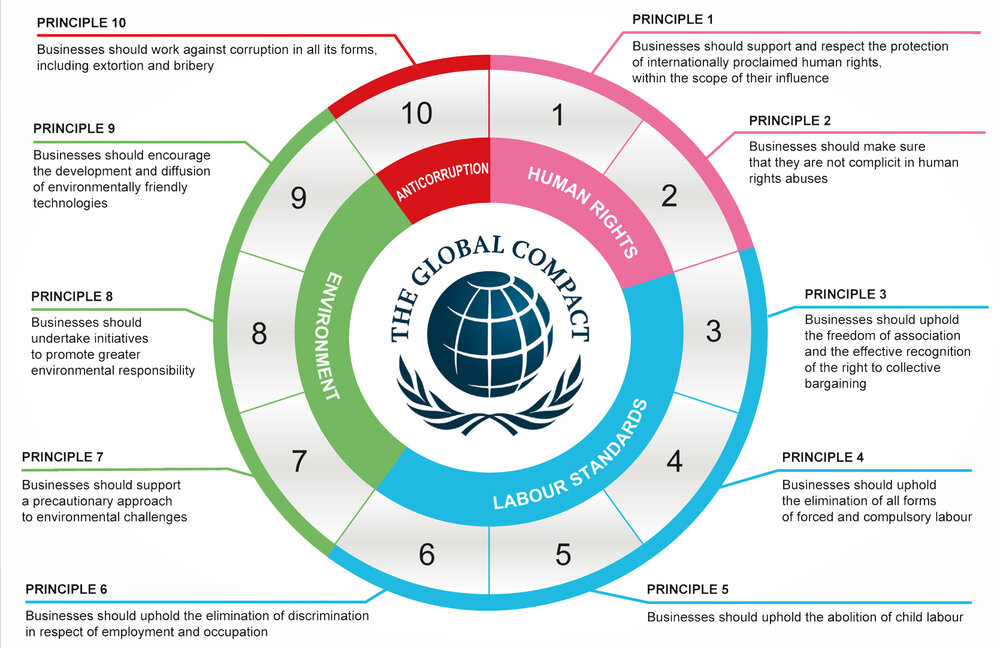
Read more at: https://unglobalcompact.org/what-is-gc/mission/principles#
What is an LCA report?
When we look at the things we use every day, from the smartphone we hold in our hands to the chair we sit on, there is a whole journey of materials, processes, and travels behind each product. A Life Cycle Assessment (LCA) is our way of delving into this journey, understanding not just where a product starts and ends, but everything that happens in between.
Imagine that each product is like a book filled with stories. Some are about the places its materials come from - the mines, forests, or factories where the raw materials first see the light of day. Other chapters tell the story of the journey these materials take through machines and hands to become the product you know; this is the production part. Then there's a story about how the product gets to you - perhaps it travels across the sea, crosses highways, or flies over the clouds. Once the product is with you, it has its own life, where it's used, maintained, and perhaps even repaired - this is the user phase. And finally, when the product's story seems to be over, there's one last chapter about what happens to it - is it recycled, transformed into something new, or disposed of?
An LCA report takes all of this, analyzes it, and tells us about the product's environmental footprint - from cradle to grave. It's not just a story of how a product is made, but also about how we can make this story better for our planet. By looking at each component of a product and its journey through raw materials, production, transport, use, and end-of-life, LCA provides us with the data we need to make smarter, more sustainable choices.
So let's dive into these chapters, understand the important moments in the lives of our products, and see how we can write better stories for the future.
Comprehensive Life Cycle Analysis: An in-depth analysis of each component
In this report, we take a thorough look at a chair consisting of 10 different components. For each of these components, a detailed Life Cycle Analysis (LCA) needs to be conducted to understand and quantify their environmental impacts - from raw materials, through production and transportation, to the user phase and finally end-of-life treatment. This means that the report not only presents an overall assessment but delves into 50 specific analyses covering each component across each of the five lifecycle stages.
By breaking down the analysis in this manner, we ensure that nothing is overlooked and that we can identify specific areas within the product's lifecycle where environmental impacts can be minimized. This approach provides a detailed insight into the environmental challenges and opportunities present at each stage of a chair's life, emphasizing our commitment to advancing sustainability on the most thorough and informed basis.
1. Introduction and Purpose
- Background for the LCA study: Introduction to the product or service and the specific reason for conducting the LCA study.
- Purpose and Scope: Clarification of the report's objectives, including system boundaries, functional units (the quantifiable performance on which the LCA study is based), and delimitation of the lifecycle stages to be included.
2. Methodology
- Description of the LCA methodology: Details about the methods and guidelines used, including the choice of LCA software and databases.
- Assumptions and limitations: An overview of the necessary assumptions and any potential limitations in the study.
3. Life Cycle Inventory (LCI) Analysis
- Origin of Raw Materials: Information about the extraction and processing of raw materials, including geographical origin and extraction methods.
- Production: Detailed description of the production process, including energy consumption and resource utilization.
- Transport: Data on the transportation of raw materials to production facilities, between production sites, and to end users, including transportation methods and distances.
- Patterns of use: Estimates of the expected use of the product, including energy consumption and maintenance under normal operating conditions.
- End-of-Life (EoL) treatment options: Description of disposal, recycling, or reuse methods at the end of the product's life cycle.
4. Impact assessment (Life Cycle Impact Assessment, LCIA)
- Selection of impact categories: Identification of relevant environmental impact categories, such as global warming, ozone depletion, eutrophication, and resource depletion.
- Results of LCIA: Presentation and discussion of the results, typically in the form of environmental impacts per impact category.
5. Interpretation
- Identification of significant impacts: Analysis of data to identify the life cycle stages, processes, or materials that contribute most to the overall environmental impacts.
- Improvement opportunities: Suggestions for strategies or changes that can reduce the product's environmental impacts.
- Sensitivity analysis: Evaluation of how changes in the key factors identified in the study affect the results.
6. Conclusions and Recommendations
- Summary of findings: A summary of the key results from the LCA study.
- Recommendations: Suggestions for actions based on the study's results, including opportunities for environmental improvement and strategic decisions.
7. Appendices and References
- Detailed Data: Complete datasets and additional technical information supporting the study's results.
8. Supplier information for reference
- Supplier Data Description: A detailed description of how and what types of data are collected from suppliers. This may include information on the origin of raw materials, production processes, transport methods, and any specific environmental management strategies they employ.
- Integration of supplier data: Explain how the supplier information is integrated into the various phases of the LCA study, especially how this data impacts the inventory analysis and impact assessment.
- Validation of supplier data: Describe the process for validating the received data to ensure its accuracy and reliability. This may include cross-referencing with public databases, third-party verification, or compliance with recognized standards.
- Contributions of suppliers to LCA results: Discuss how supplier data specifically contributes to the final LCA results and any limitations or assumptions made based on this data.
- Role of suppliers in improvement opportunities: Analyze how information from suppliers can be used to identify possible areas of improvement in the product life cycle, especially in relation to reducing environmental impacts in upstream processes.
The Climate Compass and CEMS
The Climate Compass is a CO2 calculator developed by Erhvervsstyrelsen (The Danish Business Authority) in collaboration with Energistyrelsen (The Danish Energy Agency). The Climate Compass is a tool you can use to make informed decisions regarding climate change and sustainability. When you integrate data from the Climate Compass, it allows you to explore different scenarios, policies, and strategies to mitigate the effects of climate change through interactive tools and visualizations.
CEMS - Climate ESG Monitoring System is a unique tool that makes the use of source references from the Climate Compass easier to incorporate into an ESG report.
Sources: IPCC, NOAA, NASA, IEA, World Bank, scientific journals.
Klimakompasset
The United Nations' Sustainable Development Goals
THE 17 SUSTAINABLE DEVELOPMENT GOALS OF THE UN
The Sustainable Development Goals consist of 17 specific goals and 169 targets, committing all 193 member countries of the UN to completely eradicate poverty and hunger in the world, reduce inequalities, ensure quality education and better health for all, decent jobs, and more sustainable economic growth. They also focus on promoting peace and security, strong institutions, and strengthening international partnerships.
The Sustainable Development Goals thus acknowledge that social, economic, and environmental development, peace, security, and international cooperation are closely interconnected. Achieving sustainable development outcomes requires a collective, global integrated effort.
And all countries must contribute, regardless of their different starting points. The major challenges we face today are global, and so are the consequences. Therefore, we must address challenges collectively.
Click on the headings to read more about the individual goals.
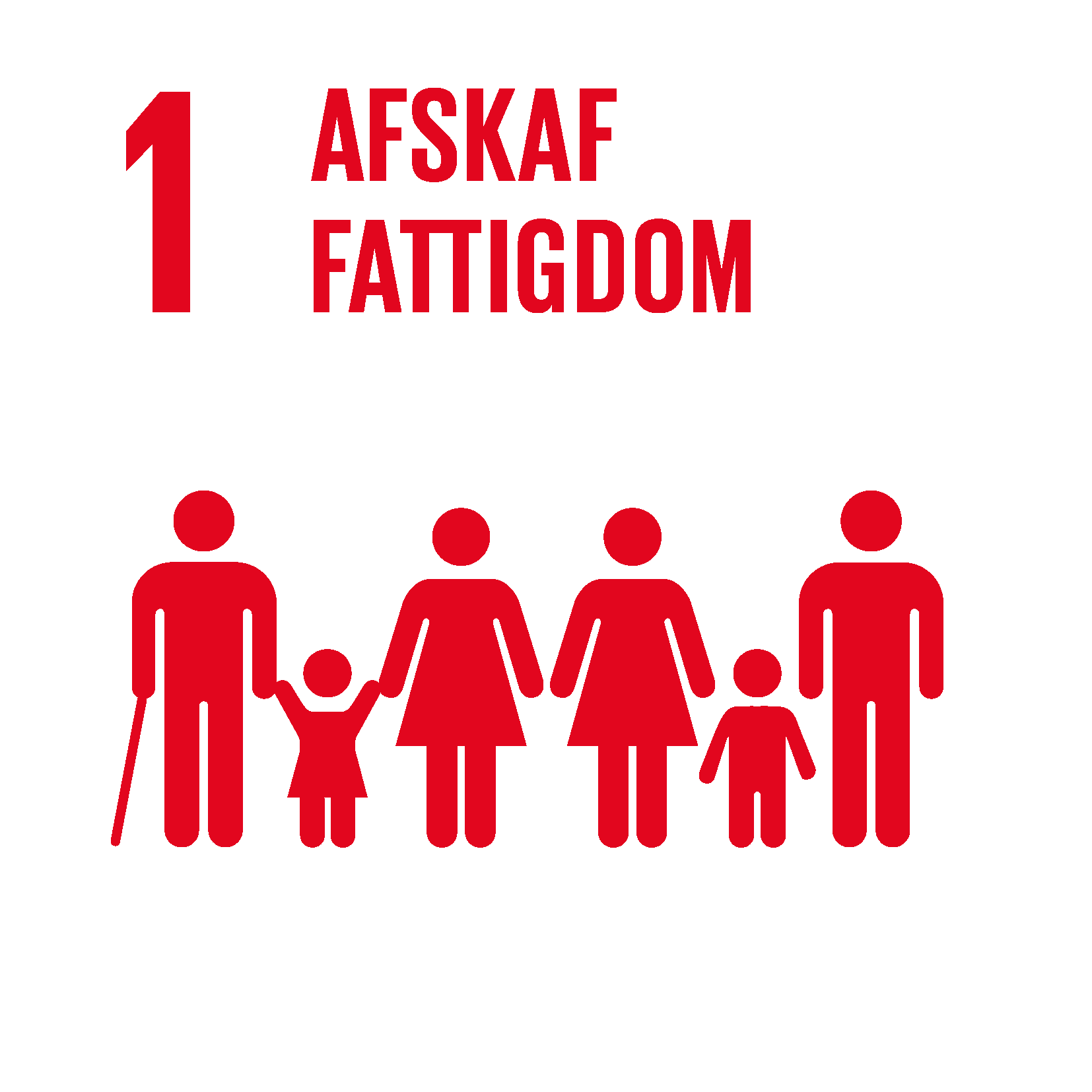
Målet handler om afskaffelse af ekstrem fattigdom, at mindske den relative fattigdom og sikre alle adgang til basale ressourcer.

Målet handler om at udrydde sult og fejlernæring og skabe bedre forhold for fødevareproduktion.
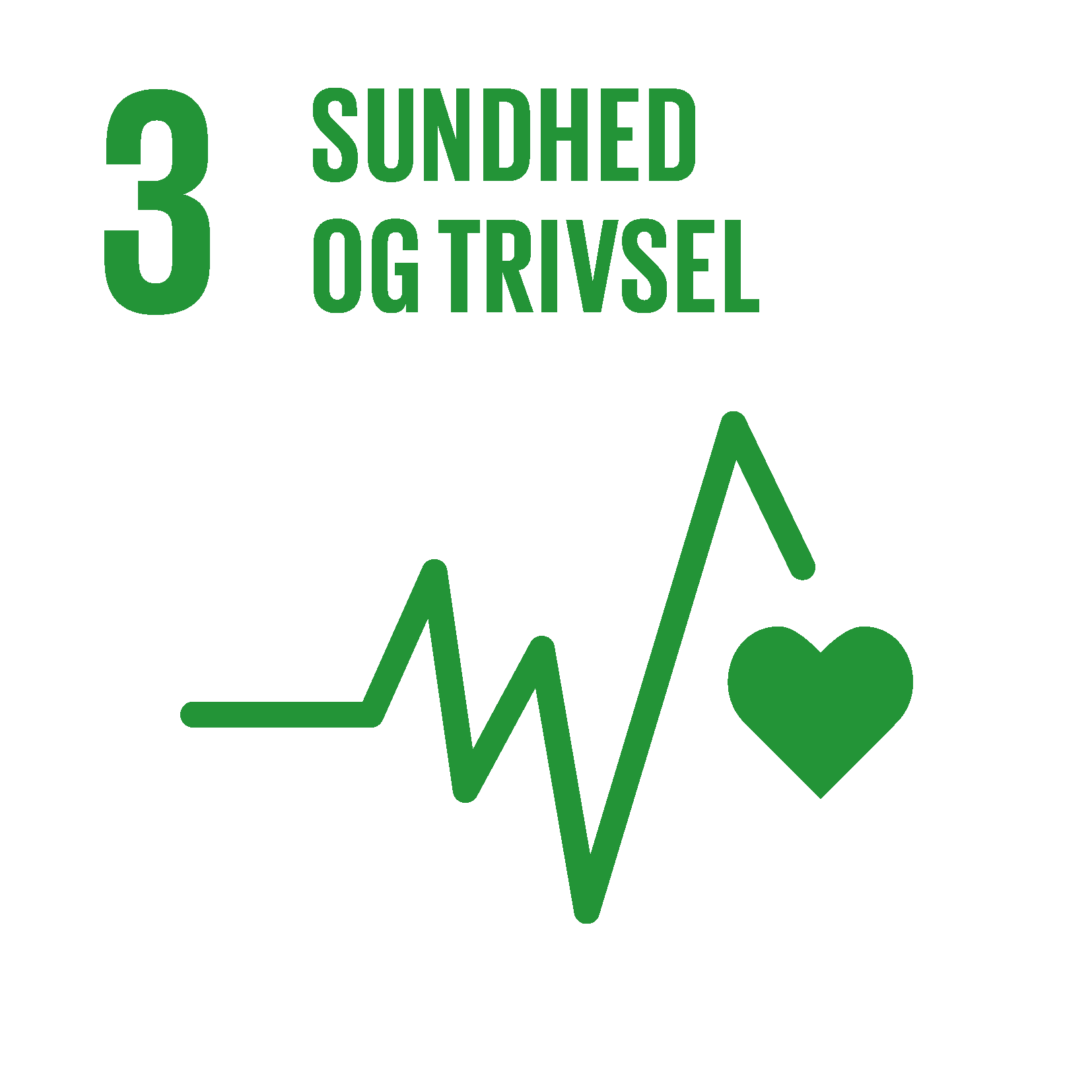
Målet handler om at mindske mødredødelighed og dødelighed blandt nyfødte og børn, sætte en stopper for epidemier og øge forebyggelsen af sygdomme samt det generelle sundhedsniveau.
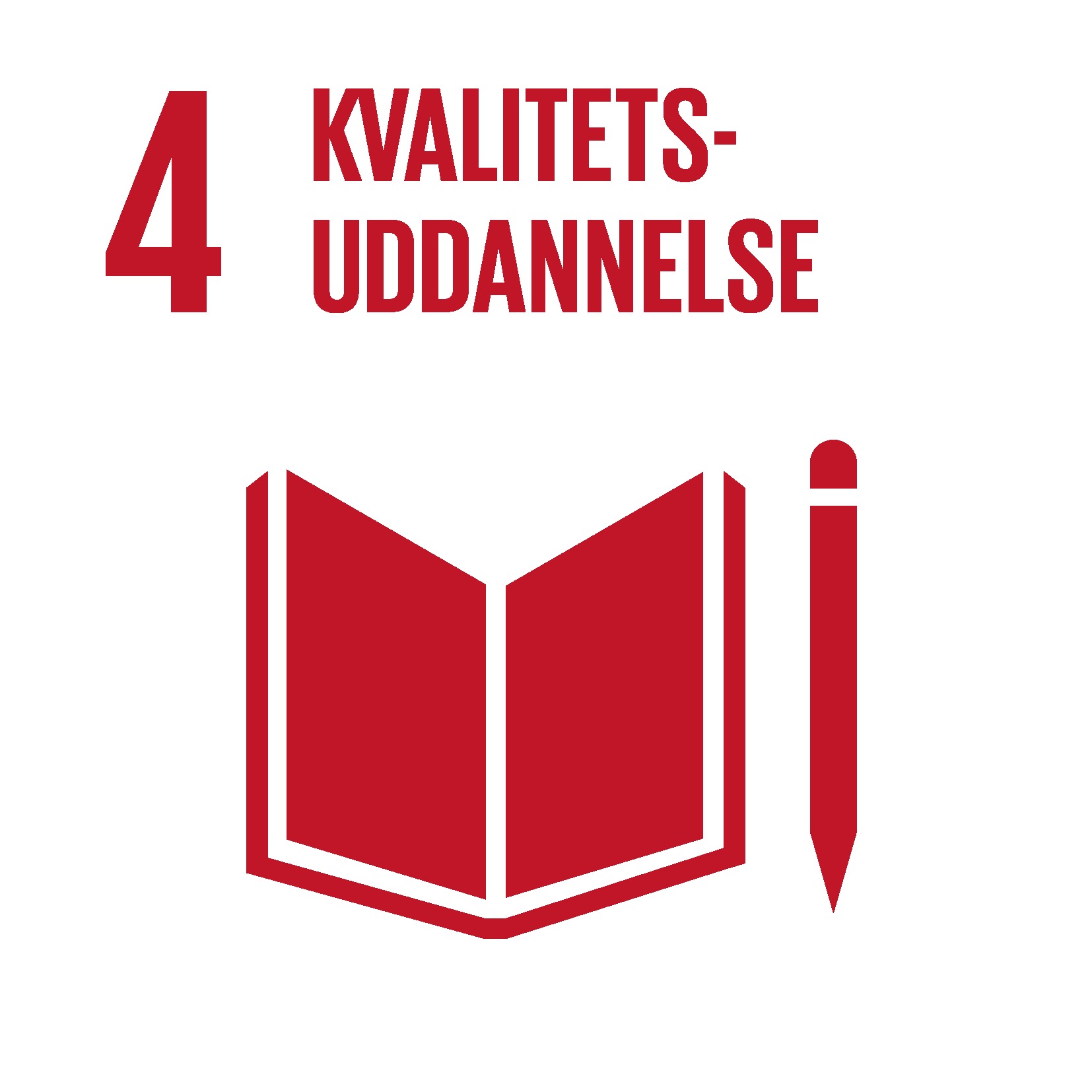
Målet handler om at sikre både drenge og piger adgang til gratis grundskole uanset forældrenes indkomst niveau og sikre lige adgangs til højere uddannelse samt information helt generelt.
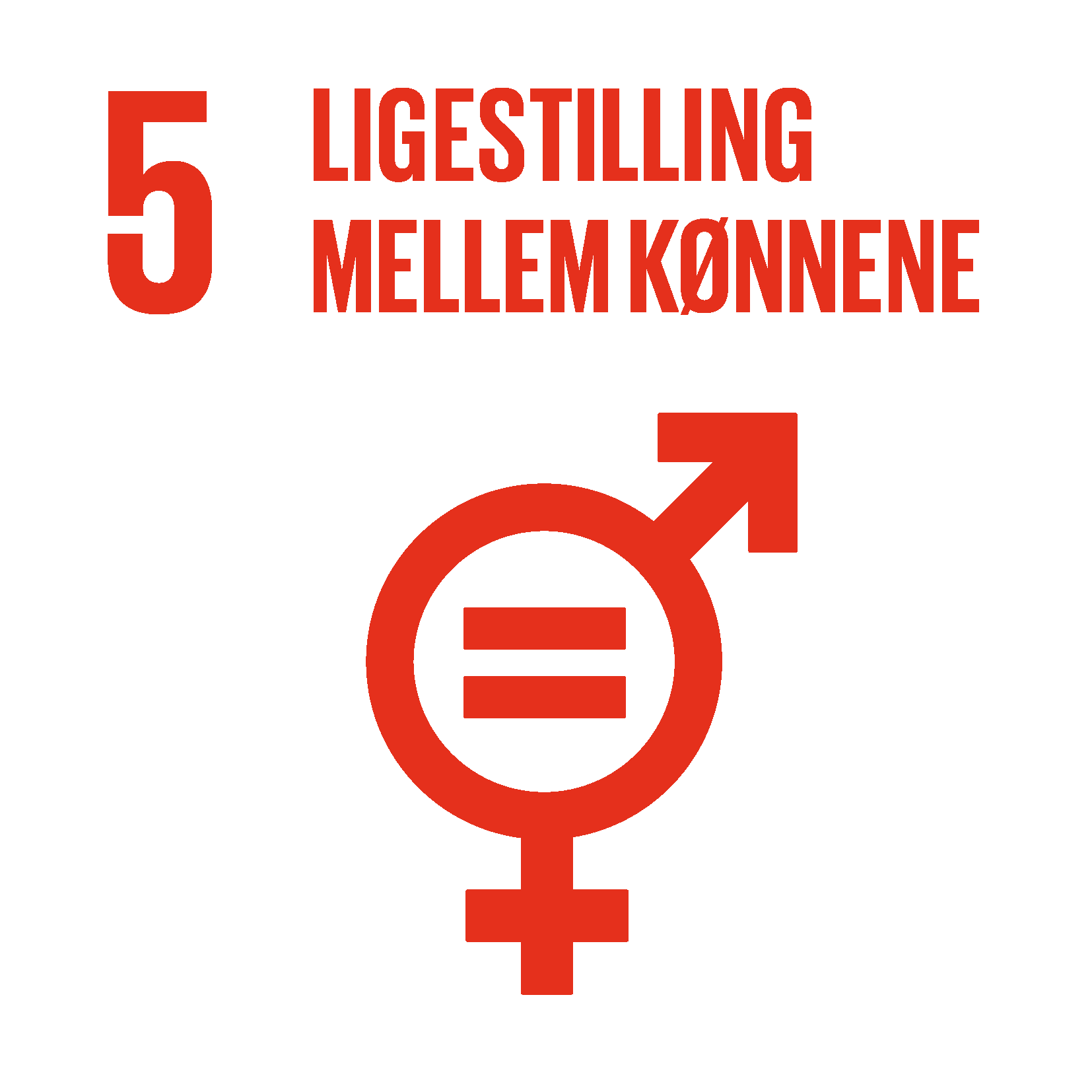
Målet handler om at styrke kvinders rettigheder og muligheder og stoppe diskrimination af kvinder og piger.
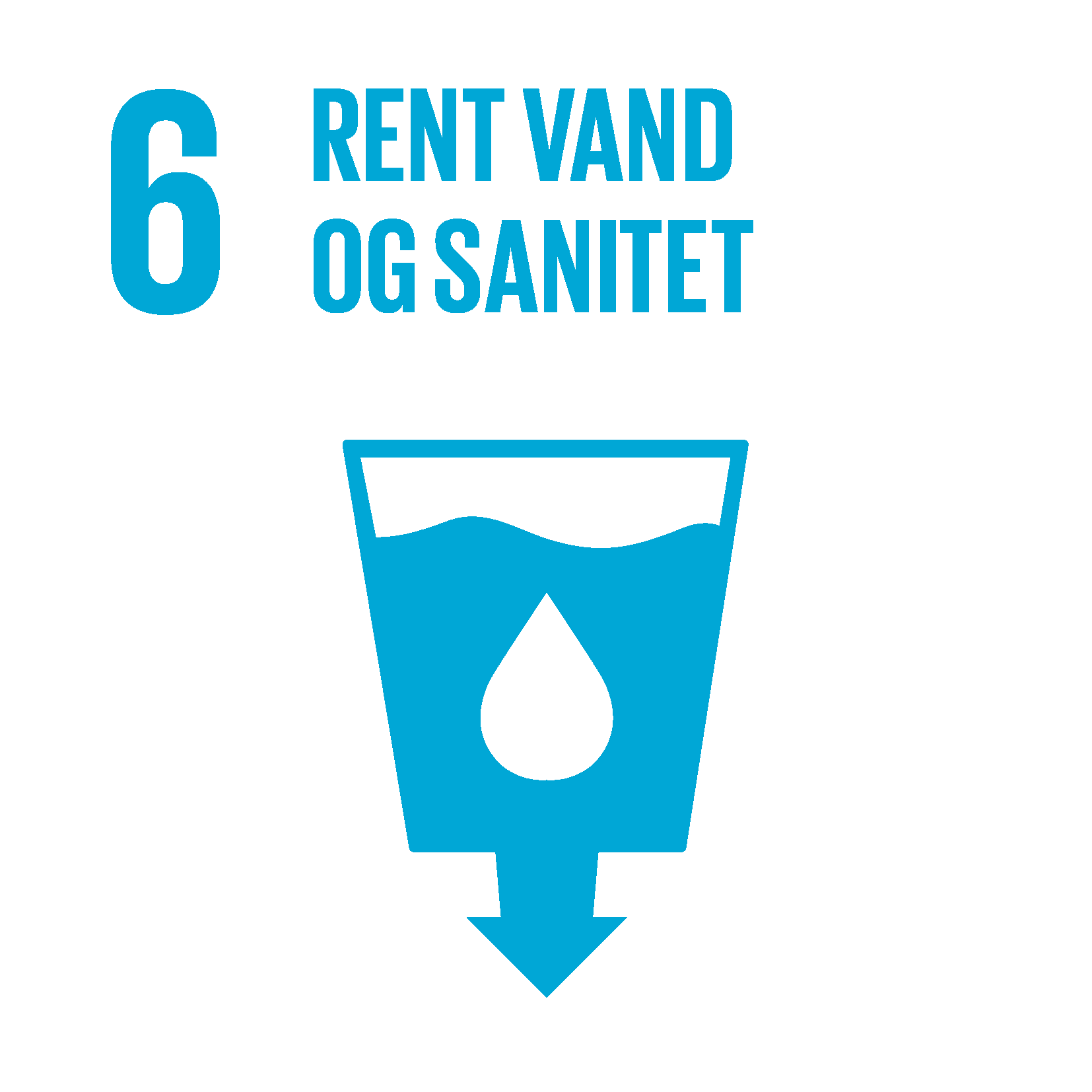
Målet handler om at forbedre vandkvaliteten og sikre en ordentlig forvaltning af vandressourcer, således at der er en universel adgang til rent drikkevand.
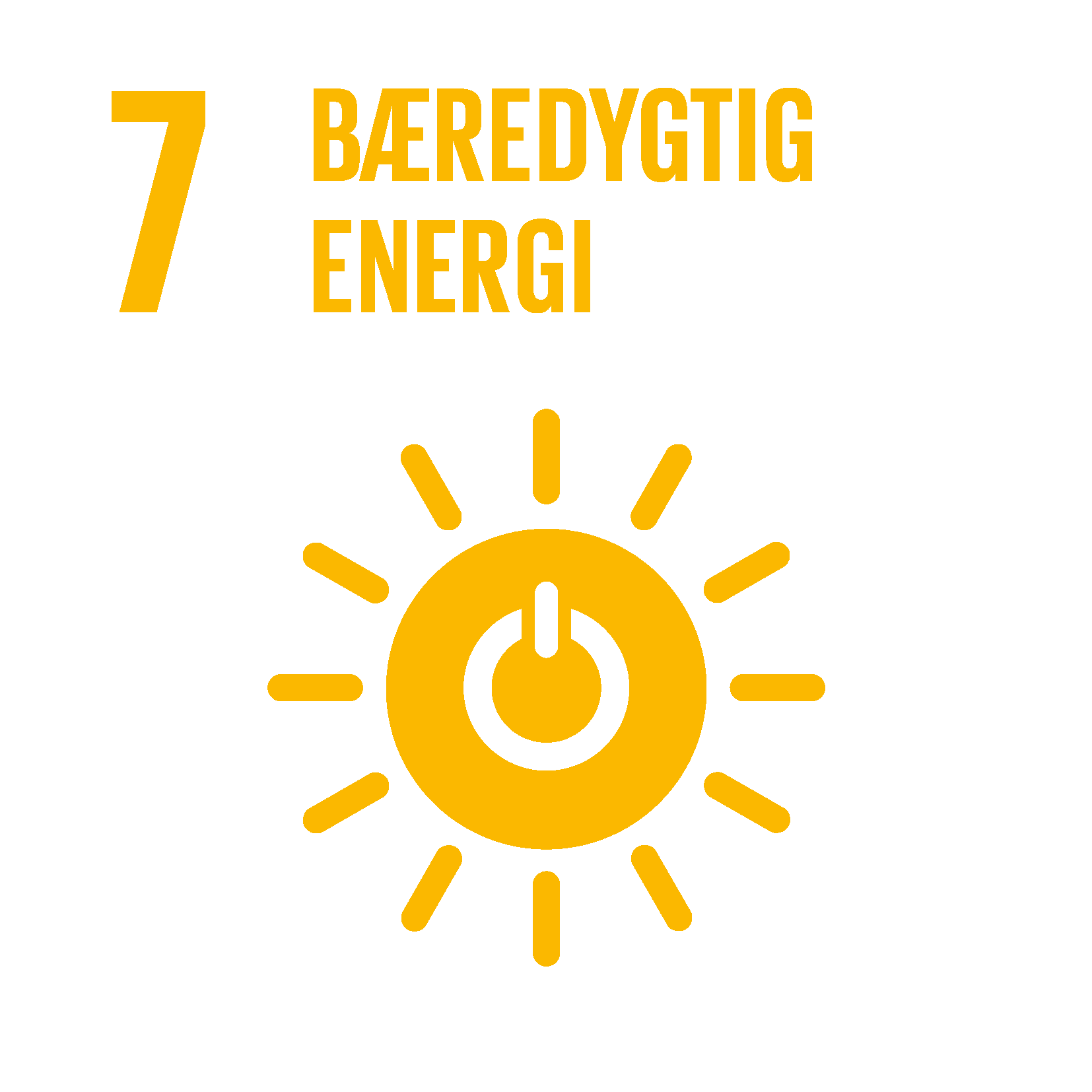
Målet handler om at sikre en universel adgang til elektricitet til en overkommelig pris og øge andelen af vedvarende energi væsentligt.
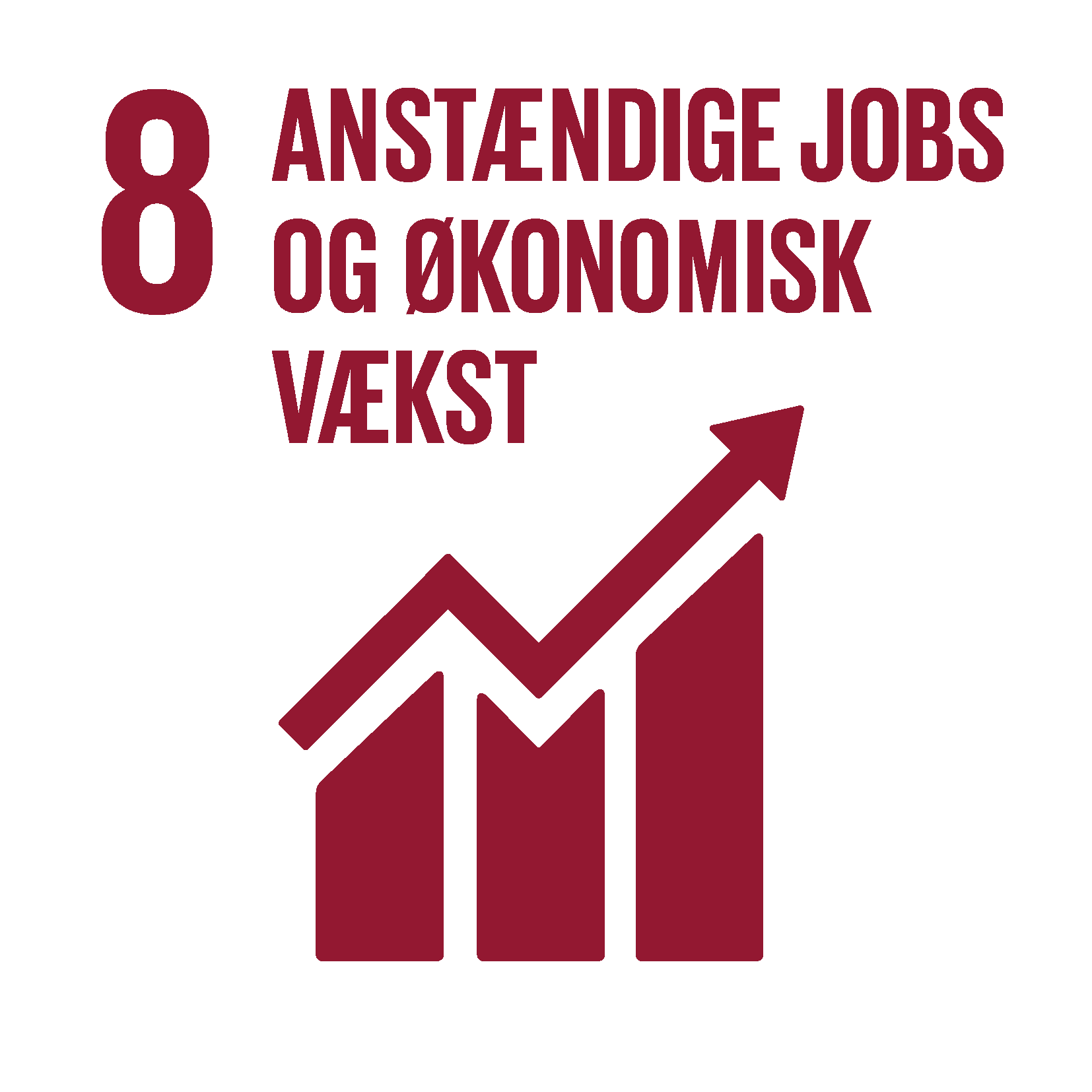
Målet handler om at fremme økonomisk vækst ved at skabe højere produktivitet og teknologiske gennembrud og opnå fuld og produktiv beskæftigelse og anstændige jobs for alle kvinder og mænd i 2030.
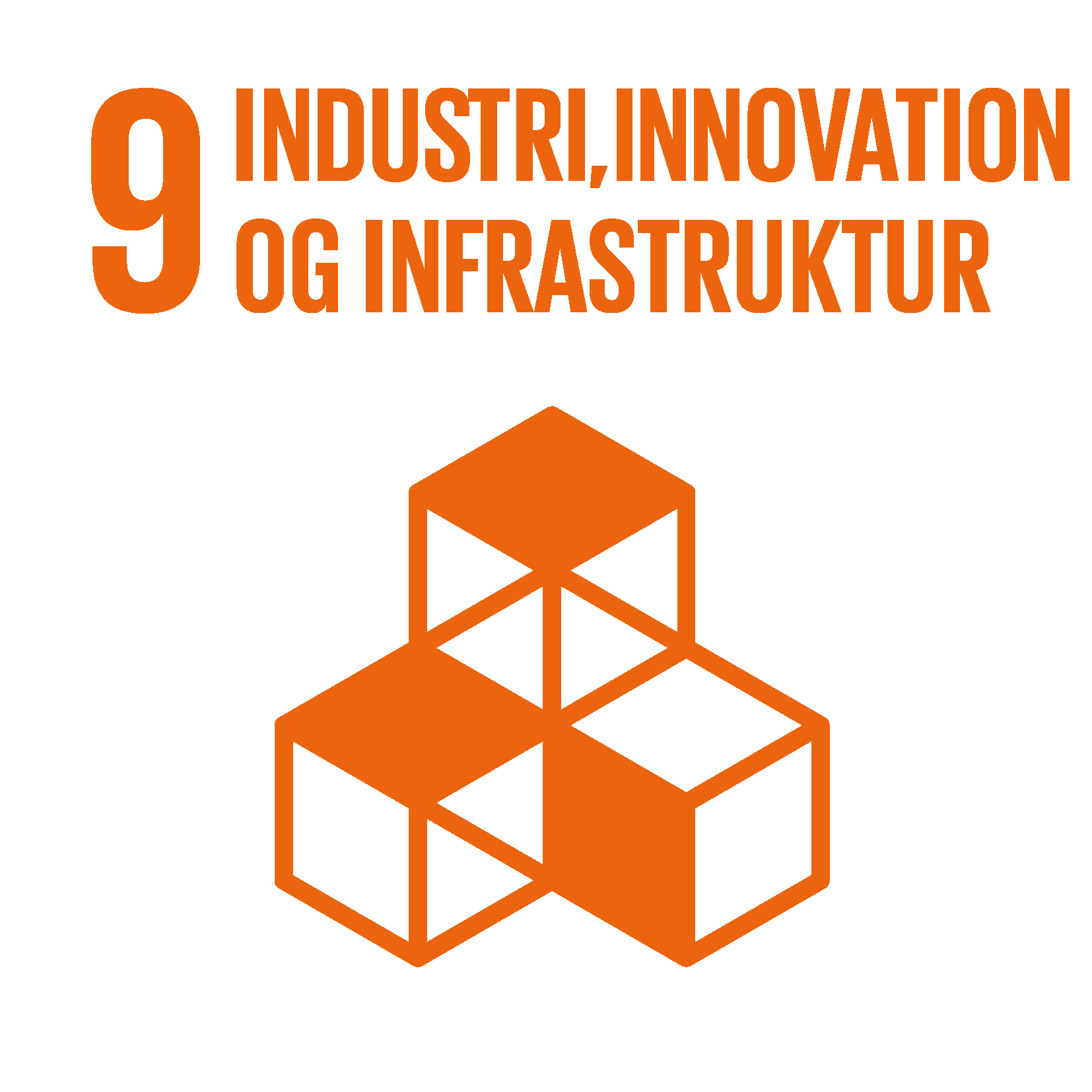
Målet handler om at udvikle pålidelig infrastruktur, fremme bæredygtig industri og investere i videnskabelig forskning og innovation.
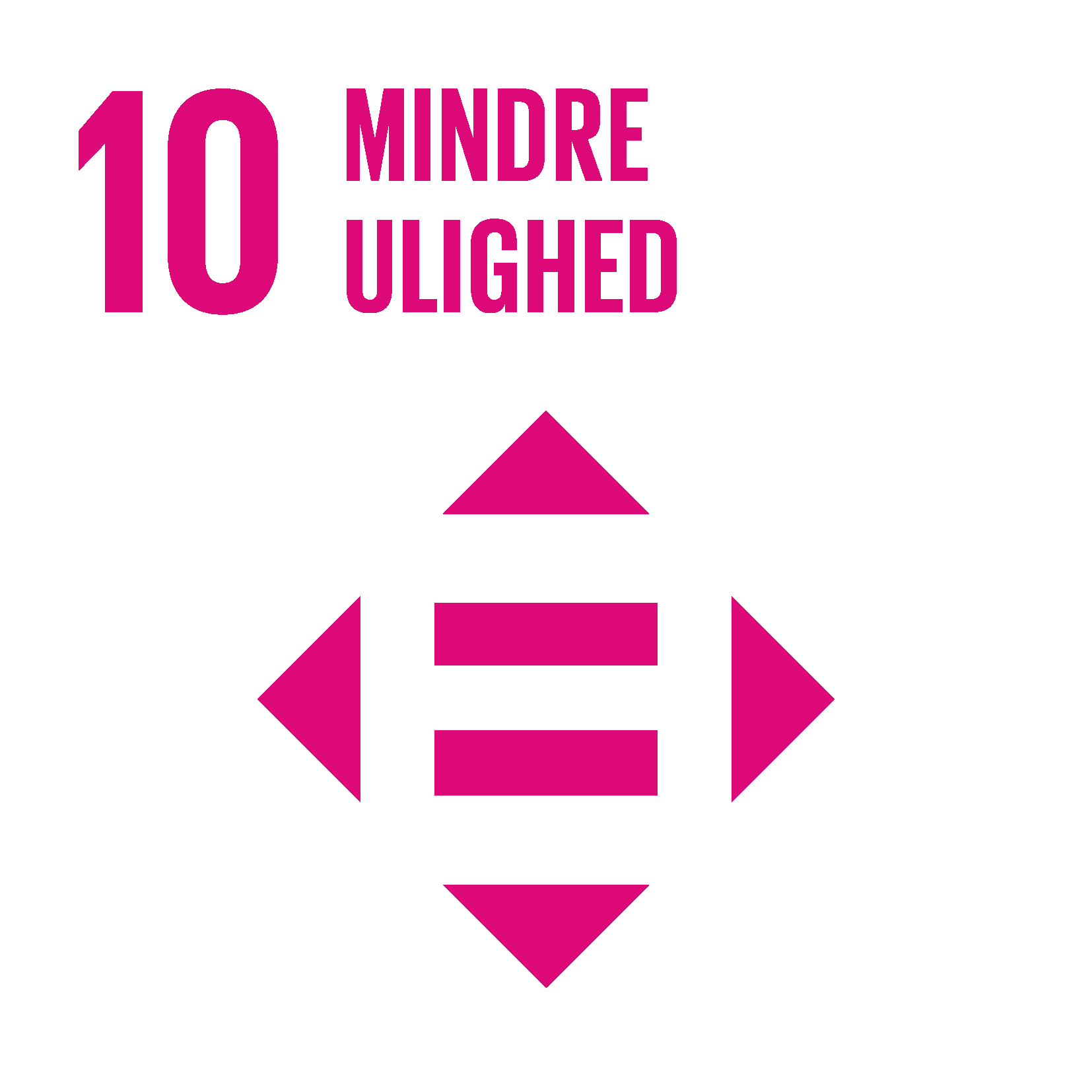
Målet handler om at styrke de laveste indkomstgrupper og fremme en større økonomisk inddragelse af alle samfundsgrupper uanset køn, race og etnicitet.
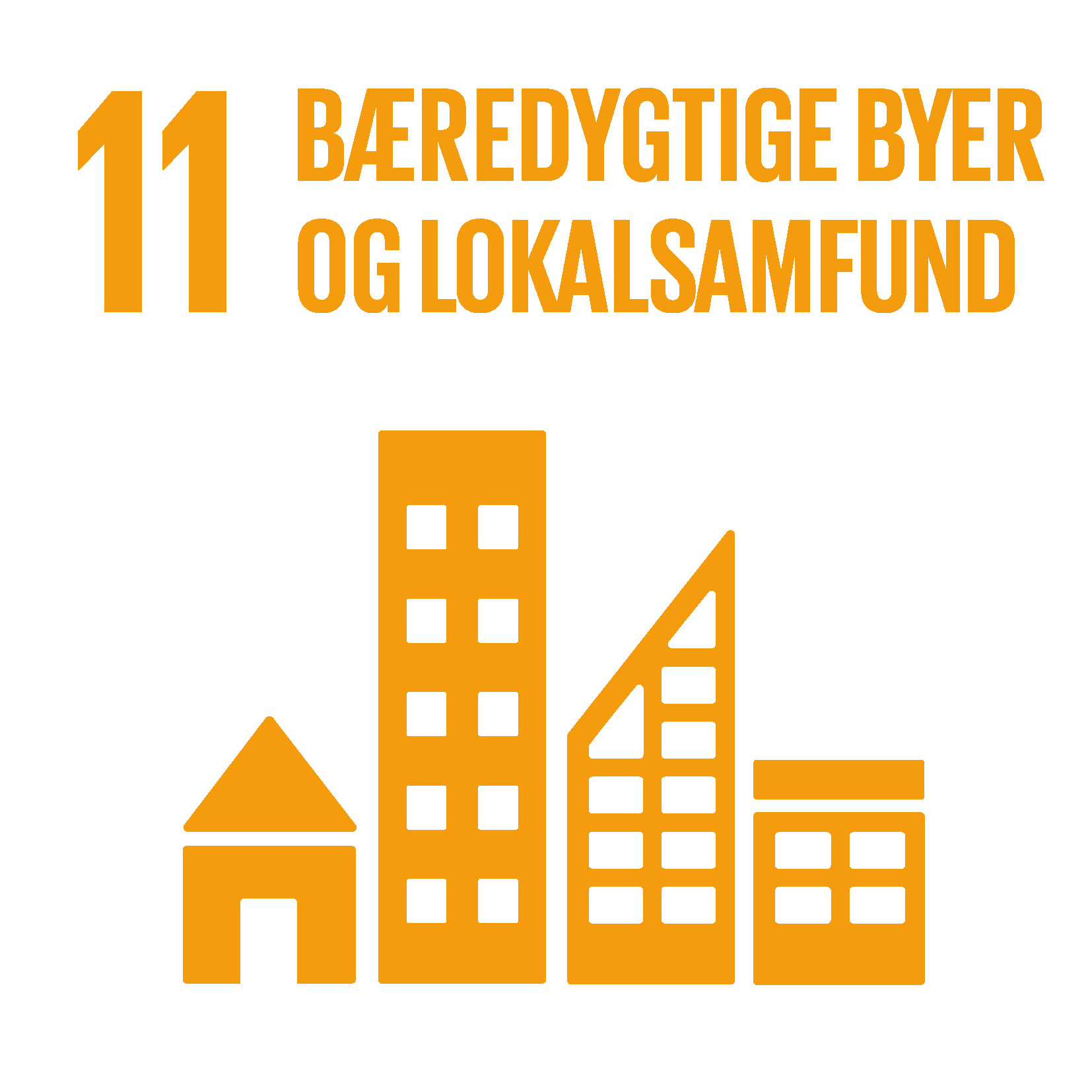
Målet handler om at garantere adgang til sikre og billige boliger samt opgradere beboelse i slumkvarterer og om investeringer i offentlig transport, skabelsen af grønne offentlige rum og forbedring af byplanlægning og bystyring.
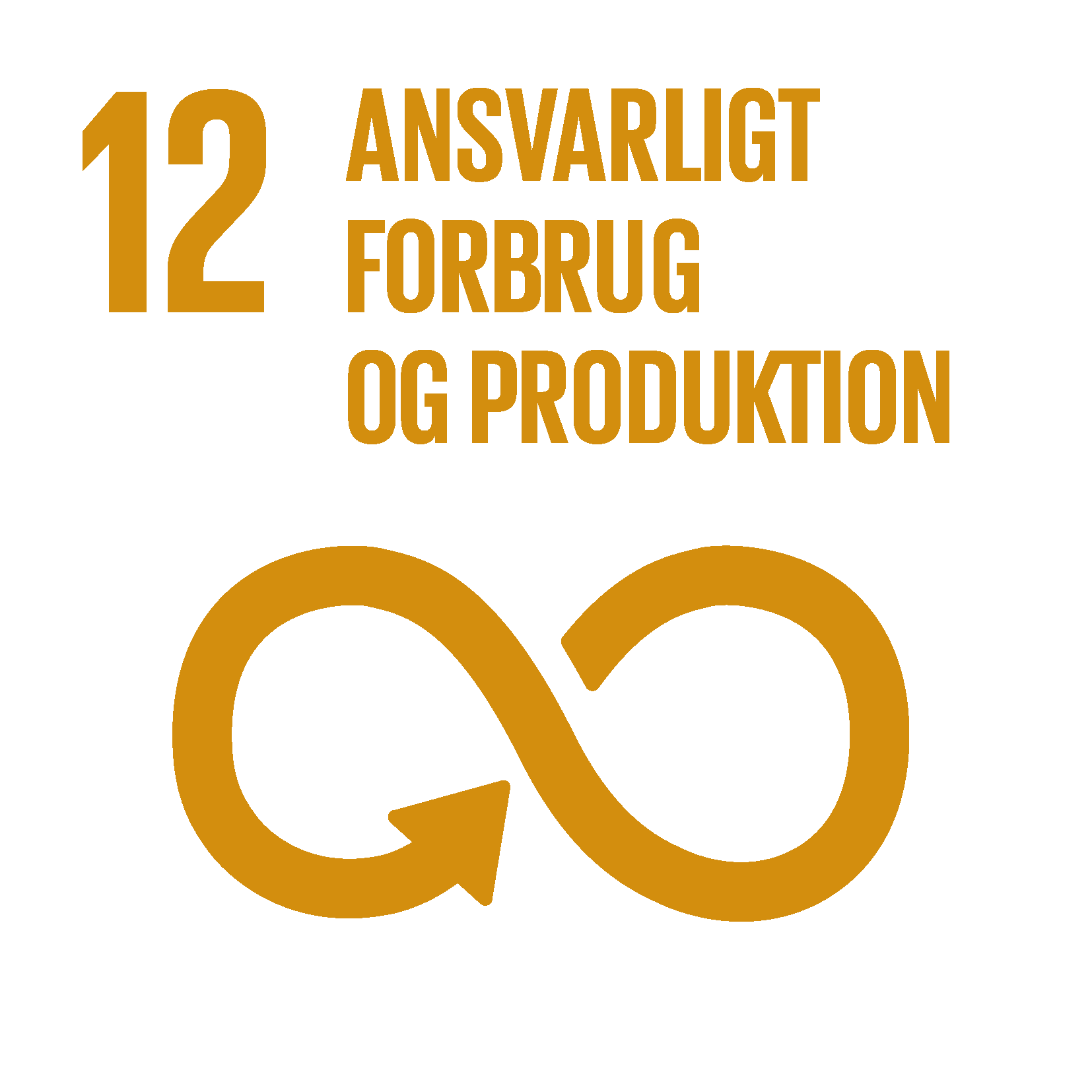
Målet handler om effektiv styring af vores fælles naturressourcer, og måden vi bortskaffer giftigt affald og forurenende stoffer samt at tilskynde industrier, virksomheder og forbrugere til at genbruge og reducere deres affald.
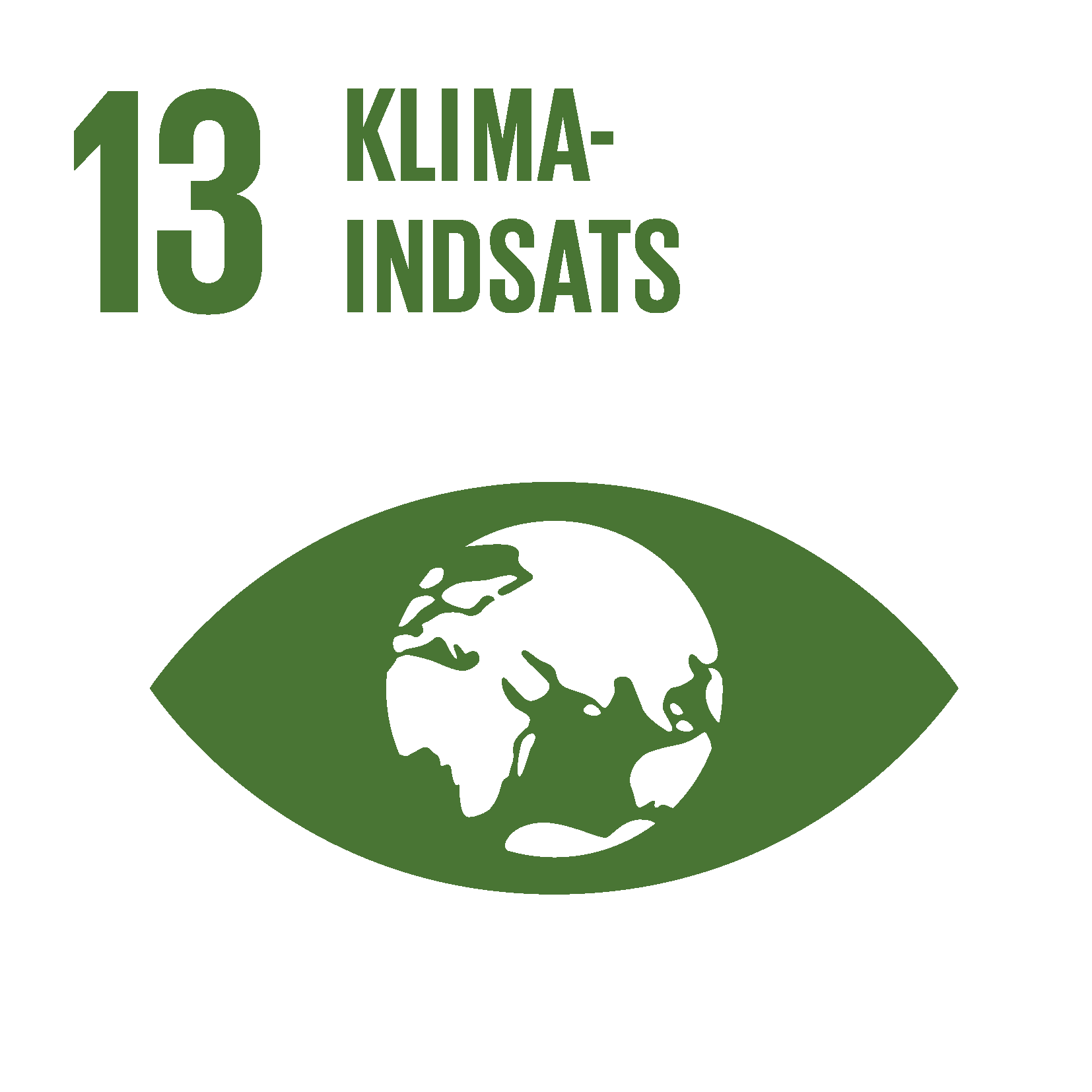
Målet handler om at begrænse stigningen af den globale gennemsnitstemperatur til to grader over det før-industrielle niveau og styrke modstandsdygtighed og klimatilpasning i sårbare regioner.
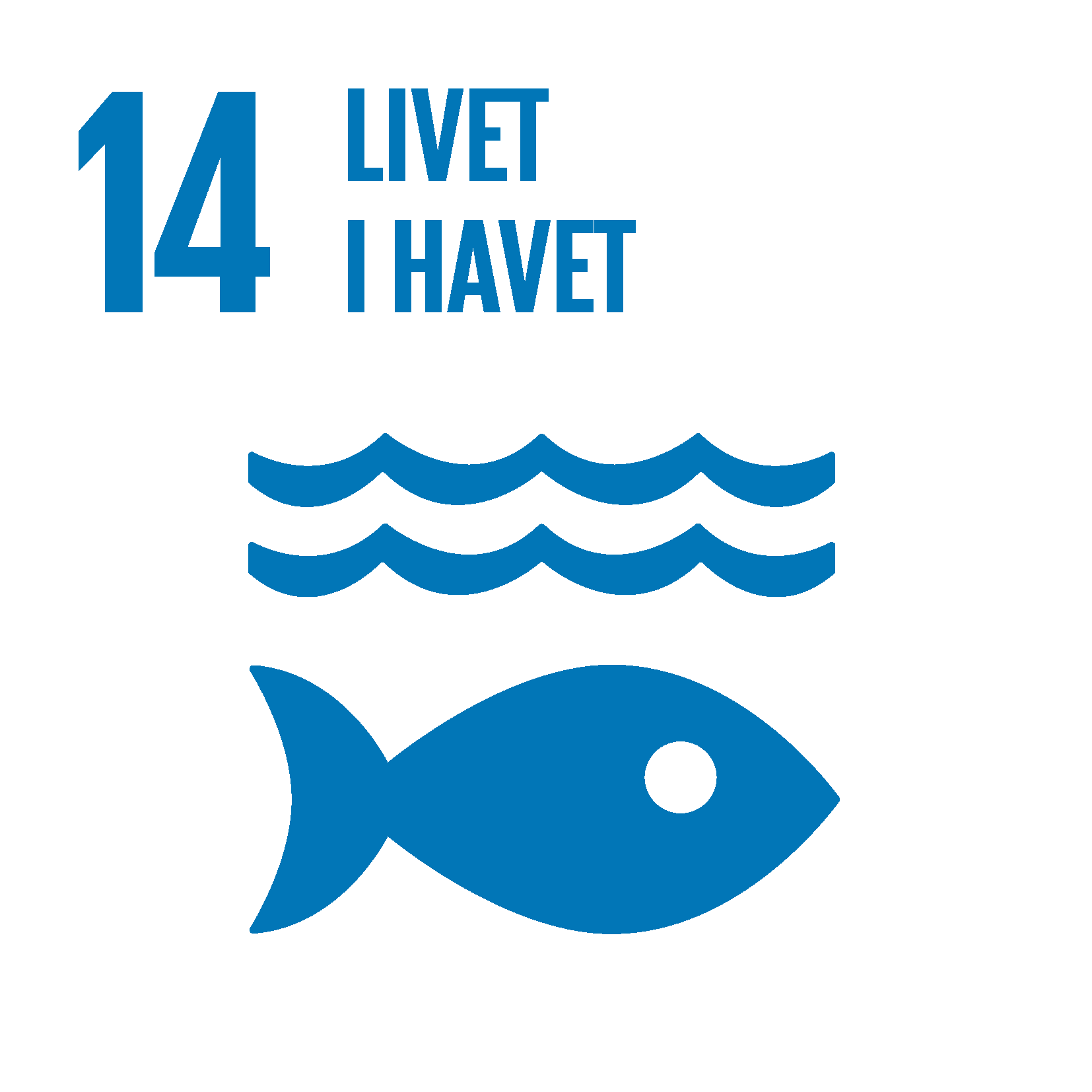
Målet handler om at skabe en ramme for bæredygtig forvaltning og beskyttelse af havene og kystnære økosystemer og bedre bevarelse og bæredygtig udnyttelse af havbaserede ressourcer.
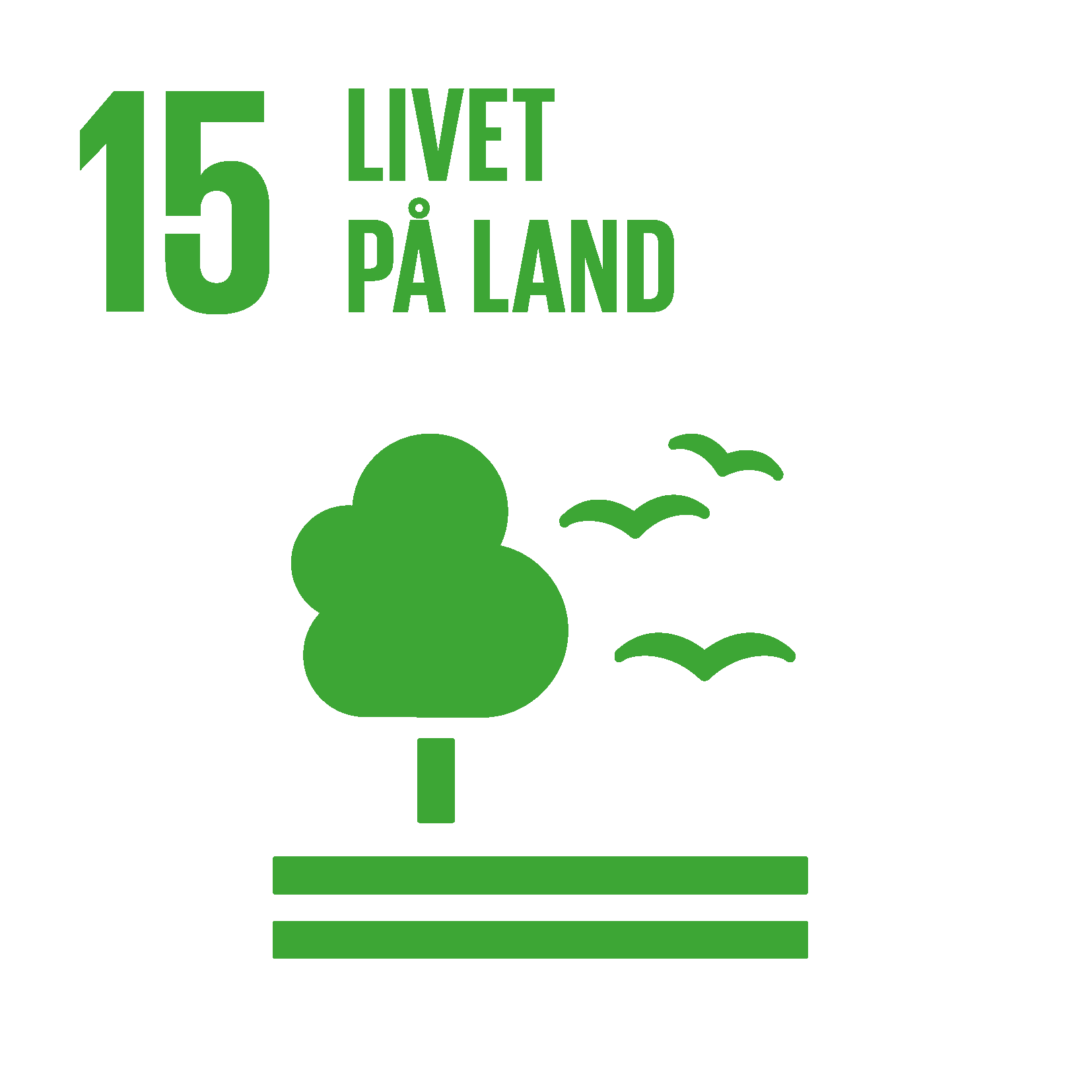
Målet handler om at bevare og genoprette brugen af terrestriske økosystemer som skove, vådområder, tørre områder og bjerge inden 2030 og fremme bæredygtig forvaltning af skove og standsning af afskovning.
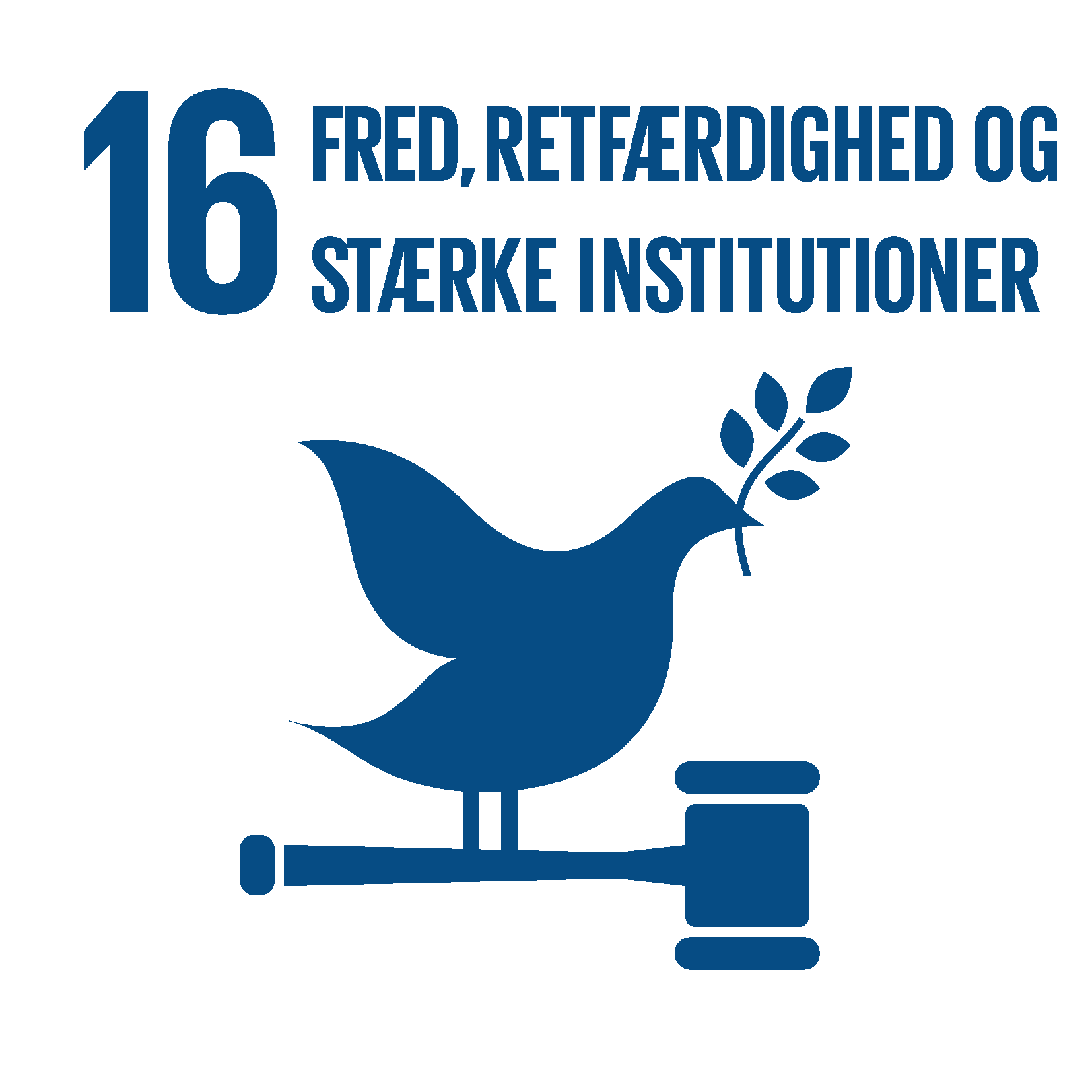
Målet handler om at støtte fredelige og inkluderede samfund, give alle adgang til retssikkerhed og opbygge effektive, ansvarlige og inddragende institutioner på alle niveauer.
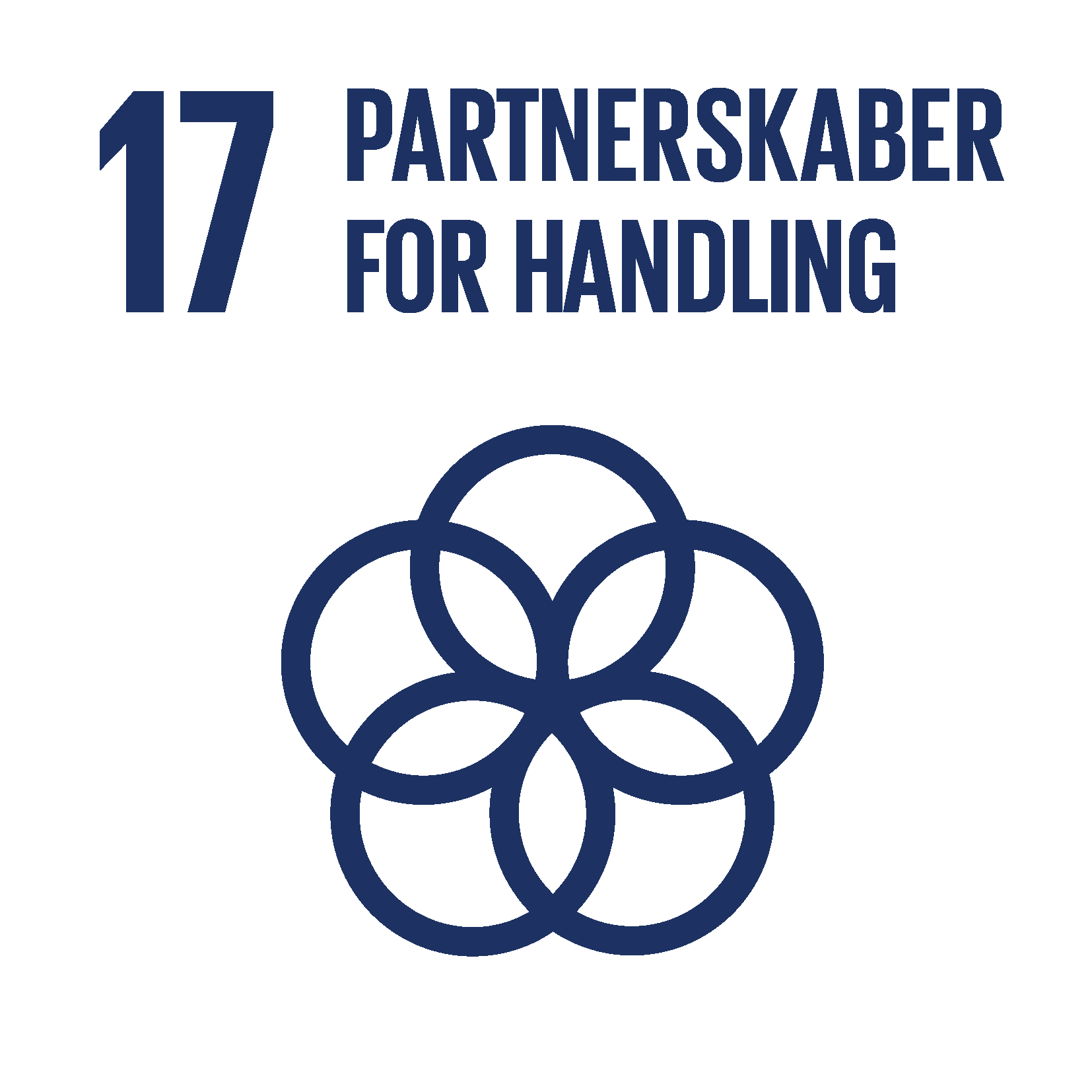
Målet handler om at styrke nord-syd og syd-syd-samarbejde, fremme international handel og støtte øget eksport fra udviklingslandene.
Kilde: https://www.verdensmaalene.dk/maal
Earth Overshoot Day
In Denmark, the date of March 16, 2024, marked the day when the Earth's natural resources were exhausted for the entire year. Earth Overshoot Day, on March 16, further emphasizes the need to change our waste habits and increase awareness about recycling and sustainability.
Earth Overshoot Day marks the day of the year when humanity has consumed all the resources that Earth can reproduce within that year. It is as if we begin to use resources on credit, as our consumption exceeds the Earth's ability to regenerate and maintain its natural resources.
Variation from country to country:
The reasons why Earth Overshoot Day varies from country to country are complex and multifaceted. Some of the primary factors include:
-
Consumption patterns: Countries with high consumption and low sustainability awareness tend to reach Earth Overshoot Day earlier. High consumption of fossil fuels, water, and non-sustainable resources increases the strain on the planet.
-
Industrial and economic activity: Countries with heavy industrial production and high economic activity may reach Earth Overshoot Day earlier due to the increased resource consumption that accompanies such activity.
-
Sustainable practices: Countries that invest in sustainable practices, recycling, renewable energy sources, and environmentally friendly technologies can delay their Earth Overshoot Day by reducing their environmental footprint.
-
Population size: Countries with larger populations and higher consumption per capita often have an earlier Earth Overshoot Day due to the overall pressure on natural resources.
Understanding these factors can help nations implement policies and initiatives that strive for a more sustainable future and extend the timing of Earth Overshoot Day.
The global Earth Overshoot Day is on July 25, 2024.
Sources:
https://www.mps-solutions.dk/gron-omstilling/world-overshoot-day-2024/
https://www.noedhjaelp.dk/klima/hvor-stort-er-dit-forbrug
Reference documents for your finalized ESG metrics (Outside Scope)
If you refer to an external provider or website with data and references in your finalized ESG report, you can upload this documentation in CEMS under the Emission reference (Outside Scope) emission category.
As a user of CEMS, you have the option to save the reference, and in case the text or data on the website you refer to changes, you can always document what was stated when you chose to use it as a reference.
The references for S and G can be saved in CEMS
Emissions Calculator (Outside Scope)
The reference is saved with the date and image, along with document information. "Outside Scope" can encompass a range of activities, data, or factors that do not directly fit into Scopes 1, 2, and 3 but may still be relevant to the company's sustainability practices and reporting. In general, "Outside Scope" is an area where the company can include relevant information that does not fit into the traditional Scopes but is still important for providing a comprehensive overview of the company's sustainability efforts and performance.
How are users added on CEMS?
Under User Management, the admin can add a new user. The admin can grant admin rights, create rights, and approve rights to a user. A new user will receive an email with a code, and then the user is ready to go.
What are page versions?
Updates to versions are available at the bottom of our calculation tools. Each time a new version is uploaded, the version number changes automatically, allowing you to track the changes over time and take advantage of the latest updates.
Total number of employees FTE
FTE (Full Time Equivalent) is a term used to define the number of full-time employees in a company based on actual working hours. One full-time employee equals one FTE. A person working 50% of a full-time position equals 0.5 FTE.
The list consists of abbreviations for terms used in texts describing, among other things, ESG/CSRD and other standards.
List of abbreviations
CCAC = Climate and Clean Air Coalition
CCWG = Clean Cargo Working Group
CDP = Carbon Disclosure Project
CH4 = Methane
CNG = Compressed Natural Gas
CO2 = Carbon Dioxide
CO2e = Carbon Dioxide Equivalent
CORSIA = Carbon Offsetting and Reduction Scheme for International Aviation
COVID-19 = Coronavirus Disease 2019
CSR = Corporate Sustainability Reporting
DQA = Data Quality Assurance
DAF = Distance Adjustment Factor
DJSI = Dow Jones Sustainability Index
EC = European Commission
EEDI = Energy Efficiency Design Index
EEOI = Energy Efficiency Operational Indicator
eGRID = Emissions & Generation Resource Integrated Database
EIT = European Institute of Innovation and Technology
ERTAC = Eastern Regional Technical Advisory Committee
EU = European Union
EU ETS = European Union Emissions Trading System
FTL = Full Truck Load
GCD = Great Circle Distance
GHG = Greenhouse Gas
GIS = Geographic Information System
GLEC = Global Logistics Emissions Council
GPS = Global Positioning System
GVW = Gross Vehicle Weight
GWP = Global Warming Potential
HBEFA = HBEFA: Handbook of Emission Factors (“Emissionsfaktorhandbuch”)
HFCs = Hydrofluoro-Carbons
HFO = Heavy Fuel Oil
HGV = Heavy Goods Vehicle
HOC = Hub Operation Category
HPDI = High-Pressure Direct Injection
IATA = International Air Transport Association
ICAO = International Civil Aviation Organization
ICC = International Chamber of Commerce
ICT = Information and Communications Technology
IEA = International Energy Agency
IMO = International Maritime Organization
IPCC = Intergovernmental Panel on Climate Change
ISO = International Organization for Standardization
ITF = International Transport Forum
kg = Kilogram
KIC = Knowledge and Innovation Communities
kJ = Kilojoule
KPI = Key Performance Indicator
kWh = Kilowatt-hour
LEARN = Logistics Emissions Accounting & Reduction Network
LNG = Liquefied Natural Gas
LPG = Liquefied Petroleum Gas
LSP = Logistics Service Provider
LTL = Less than Truck Load
MDO = Marine Diesel Oil
MIT = Massachusetts Institute of Technology
N2O = Nitrous Oxide
NDCs = Nationally Determined Contributions
NF3 = Nitrogen Triflouride
NGO = Non-Government Organization
NOx = Nitrogen Oxides
NTM = Network for Transport Measures
OECD = Organization for Economic Co-operation and Development
peg = Passenger equivalent
PFCs = Perfluoro-Carbons
RAILISA = RAIL Information System and Analyses
RED2 = Renewable Energy Directive (EU)
REff Tool® = Resource Efficiency Tool
RP = Recommended Practice
SAF = SAF: Sustainable Aviation Fuel
SBTi = Science-Based Targets initiative
SDA = Sustainable Development Agenda
SDG = Sustainable Development Goals
SF6 = Sulphur Hexafluoride
SFC = Smart Freight Centre
SFD = Shortest Feasible Distance
SI engine = Spark Ignition engine
t = Tonne = 1000 kg
T&D = Transmission and Distribution
TCE = Transport Chain Element
TEU = Twenty-foot Equivalent Unit
t-km = Tonne-kilometer
TMS = Transport Management System
TOC = Transport Operation Category
TSC = Transport Service Category
TTW = Tank-to-Wheel/Wake
UIC = Union Internationale des Chemins de Fer (International Union of Railways)
UN = United Nations
UNGC = United Nations Global Compact
US EPA = United States Environmental Protection Agency
VLSFO = Very Low Sulfur Fuel Oil
WBCSD = World Business Council for Sustainable Development
WRI = World Resources Institute
WTT= Well-to-Tank
WTW = Well-to-Wheel/Wake
WWF = World Wildlife Fund for Nature
Navigate through the key concepts of sustainability
Navigate through the key concepts of sustainability
It can be challenging to navigate the many different concepts when working on your company's sustainability. Get an overview and explanations of the most commonly used terms in sustainability and responsibility. Read more at: Find vej i de vigtigste begreber om bæredygtighed
Settlement of solar power and wind power
Settlement of solar power and wind power from own installations.
Read more about the settlement of solar and wind here:
The EU aims to reduce CO2 emissions by 55% by 2030 compared to 1990
What are the EU's objectives?
By 2030, the EU aims to reduce CO2 emissions by 55% (compared to 1990)
The EU legislates on various matters and has in recent years incorporated considerations for the climate when legislating on other topics, such as housing construction and agricultural support, as well as in common regulations for vacuum cleaners, aviation, and much more. The EU has a special scheme for the 11,000 most climate-polluting companies. They are required to reduce their emissions by 43% (compared to 2005). Each country is also mandated to lower its CO2 emissions. In Denmark, we are required to reduce 39% of our CO2 emissions.
Additionally, the EU has adopted objectives for production and use of energy by 2030:
- The EU aims to increase the share of energy consumption in the EU from renewable sources such as solar, water, and wind to 27%.
- The EU aims to improve the efficiency of energy consumption by 27% (e.g., through better insulation of buildings).
EU's long-term goal is to strive to become the first climate-neutral continent by 2050.
Sources:
https://www.eu.dk/da/temaer/klima-og-groen-omstilling/eus-klimamaal
https://climate.ec.europa.eu/eu-action/climate-strategies-targets/2050-long-term-strategy_en
What is a Double Materiality Analysis, and Why is it Important for Your Company?
If your company is subject to CSRD reporting, you must conduct a double materiality assessment. But what does that actually mean?
A double materiality assessment determines which topics should be reported in your CSRD report and which can be omitted. This assessment evaluates topics based on two dimensions:
-
Financial Materiality: This dimension assesses how significant a given factor is for the company's financial performance. It focuses on identifying and reporting issues that could impact the company's finances, making them relevant for investors and other financial stakeholders.
-
Impact Materiality: This dimension evaluates the significance of the company’s activities regarding their impact on the environment, society, and people. It aims to identify and report the most critical social and environmental consequences of the company’s actions, regardless of their financial impact.
By combining these two dimensions, companies gain a holistic view of the topics most critical to their sustainability efforts.
How is the threshold value used in the assessment?
To structure the double materiality assessment, a scale from 1 to 5 is used to evaluate the importance of each topic. The total point value for each topic determines its placement in one of nine fields, allowing the company to identify and prioritize the most significant areas. This threshold value ensures that the most important topics, from both financial and sustainability perspectives, stand out clearly.
The company should consider its impacts in the short, medium, and long term, as their significance may change over time. Before starting the assessment, it is essential to have a thorough understanding of the business model and value chain, so that the relevant functions, suppliers, and partners can be involved in addressing sustainability issues.
What is an LCA?
A Life Cycle Assessment (LCA) is a method used to evaluate the overall environmental impact of a product, process, or service from start to finish – from "cradle to grave." This involves analyzing all phases of the product's life cycle, including raw material extraction, production, distribution, use, and final disposal or recycling.
The purpose of an LCA is to identify and quantify environmental impacts so that we can make informed decisions on how to reduce our environmental footprint and improve sustainability.
Which methods do we refer to?
To ensure that our LCA analyses are reliable and widely applicable across different industries, we refer to the internationally recognized standards:
-
ISO 14040:2006: This standard describes the principles and framework for life cycle assessment, including the definition of goals, scope, life cycle inventory, life cycle impact assessment, and interpretation.
-
ISO 14044:2006: This standard provides detailed requirements and guidelines for conducting life cycle assessments, including data collection, modeling, and reporting.
These standards are globally accepted and can be adapted to different types of products and processes, making them ideal for ensuring consistency and credibility in our analyses. Furthermore, they are compatible with Klimakompasset, which we use to collect data for our LCA analyses.
By following these ISO standards, we ensure that our LCA reports are transparent, verifiable, and aligned with best practices in environmental assessment.
If you have further questions about LCA or our methods, please feel free to contact us.
What is an EPD & a PCR?
An Environmental Product Declaration (EPD) and a Product Category Rule (PCR) document are central elements in assessing a product's environmental performance. An EPD is a standardized document that transparently and comparably communicates the product’s environmental impact based on a Life Cycle Assessment (LCA). PCRs define the specific rules and guidelines used to prepare an EPD for a particular product category, ensuring that the reported data is relevant and consistent across similar products.
The purpose of both EPDs and PCRs is to enable stakeholders such as customers, architects, and regulators to understand and compare the environmental impact of different products in a uniform manner. While EPDs present key environmental data in an easily understandable format, PCRs ensure that the methods used are consistent and comply with standardized requirements, fostering reliable and sustainable choices.
Which standards do we refer to?
To ensure that our EPDs and PCRs are reliable and in compliance with international standards, we adhere to the following:
-
ISO 14025:2006: This standard establishes the principles and procedures for developing EPDs, including requirements for transparency, third-party verification, and the use of PCRs to ensure comparability between products.
-
EN 15804:2012+A2:2019: This standard specifies the requirements for EPDs for construction products and includes all relevant phases of the product’s lifecycle as well as the specific environmental indicators that must be reported.
By following these standards, we ensure that our EPDs and PCRs are accurate, verifiable, and can be used to make informed decisions about sustainability in line with best practices in environmental assessment.
If you have further questions about EPDs, PCRs, or our methods, please feel free to contact us.
How do we calculate CO2e reductions
How do we calculate CO2e reductions from internal recycling, and why do we use negative values?
In CEMS reduction calculator, we use emission factors from the Climate Compass to estimate CO2e reductions achieved by internal recycling of materials such as wood. When we recycle materials internally instead of buying new, we avoid the CO2e emissions that would otherwise be associated with the production of new materials. This avoided emission is represented as a negative value in our calculator, which clearly shows the real savings in CO2e emissions.
This calculation methodology is based on recognised principles, including Climate-KIC's Guidance on Avoided Emissions, which recommends documenting avoided emissions through recycling as part of a reliable and consistent decarbonisation strategy. Climate-KIC (Climate Knowledge and Innovation Communities) is one of the operational units of the EIT (European Institute of Innovation and Technology) working in the field of climate. EIT Climate-KIC is Europe's leading initiative in climate innovation, which works to accelerate the transition to a climate-neutral economy through education, entrepreneurship and cross-sector partnerships. It is a knowledge and innovation community supported by the EU that develops solutions to combat climate change. By combining the Climate Compass emission factors with this methodology, we ensure that our approach to quantifying CO2e reductions is both correct and based on best practice in the field.
Read more about the EIT here: https://eit.europa.eu/
Read more about Climate KIC here: https://www.climate-kic.org/
Emission calculator
The ESG space is constantly evolving, and at CEMS, we understand that ESG reporting can seem overwhelming at first. We encourage you to consider your first ESG report as a learning experience – we all evolve along the way. Even uncertain or inaccurate reporting is better than no reporting, and the process gets easier with each year.
Below, we present some of the more complex concepts that you will encounter in our emission and reduction concepts.
Fuel in own vehicles:
Fuel consumption in own vehicles always has this text first. Subsequently, the type of fuel in question is specified. Here, the publicly available source is used as a reference.
Consumption of other transport:
Consumption of other transport always has this text first. Subsequently, the type of fuel, the mode of transport (goods transport, employee transport or employee cars) and the relevant source are specified. Publicly available sources are used as a reference.
Emission reference, for fuel in own vehicles + consumption of other transport:
To determine the CO₂e emissions of the fuel type you have purchased, you must contact your supplier and obtain their emissions reference. This reference indicates the CO₂e emissions of the product.
Supplier Scope 1, 2 or 3 discharge data:
To determine the CO₂e emissions of the product you have purchased, you must contact your supplier and obtain their emissions reference. This reference indicates the CO₂e emissions of the product.
Consumption from own plants:
Consumption from own plants always has this text first. Subsequently, specify the fuel unit used. Publicly available sources are used as a reference.
Clitoris:
All units are documented with publicly available sources, except for emission references and supplier emissions data.
Total Purchases:
For total purchases (several invoices in the period), where the supplier does not have emission data for the product quantity, and where the invoice includes both product purchases, freight and man-hours (purchases, products and services), the following units are used when entering: Purchases, products and services – services and services.
Example: Cleaning (Purchasing, products and services – services and services). It is a publicly available source reference that can deal with product purchases, freight and man-hours.
Quantities:
Where possible, it is always best and most correct to use units in quantities, as quantities are not variable, unlike emissions that are calculated in currency – as currency is variable and will not give the actual correct emission figure.
ESG concepts - including legislation and regulations
Introduction
When working with ESG reporting, there are many concepts to keep track of. It doesn't get easier that these concepts are intertwined and partially overlap. This is a rapidly evolving area with rules and requirements that are constantly changing, as well as rules and requirements that are still being developed.
CEMS encourages staying informed about the rules and requirements for large publicly listed companies—even if your company does not fall into this category—so that you can stay ahead of the requirements. It is not unlikely that these stringent requirements will be extended to smaller companies as well. Additionally, it’s a good idea to be proactive so you can provide information that your partners may request.
The following introduction provides a brief overview of some of the key concepts and regulations within the ESG field:
- CSRD (Corporate Sustainability Reporting Directive)
- ESRS (European Sustainability Reporting Standards)
- Including sector-specific ESRS requirements as well as ESRS VSME and ESRS LSME.
- CS3D (also known as CSDDD) (Corporate Sustainability Due Diligence Directive)
- EU Taxonomy for Sustainable Activities
A fundamental understanding of these concepts will help you navigate ESG reporting and be prepared for future requirements. You will be well-equipped to understand the context of the following sections and explanations of terms.
However, we will start with a brief presentation of EFRAG, along with a short definition of large companies and small and medium-sized enterprises (SMEs).
EFRAG
EFRAG (European Financial Reporting Advisory Group) is a private association, established in 2001 with the support of the European Commission.
In 2022, EFRAG expanded its role under the CSRD and now provides technical advice to the Commission by developing draft EU standards for sustainability reporting. They have played a central role in the development of the ESRS requirements.
EFRAG serves as an umbrella organization for the CSRD and ESRS. EFRAG develops sustainability reporting standards that help companies meet the requirements of the CSRD. Through the ESRS, EFRAG ensures consistent guidelines for sustainability reporting in the EU, promoting transparency and comparability.
Large Companies & SMEs
Large companies are defined as those with 250 or more full-time employees (FTEs) or an annual revenue exceeding 50 million euros or a balance sheet total exceeding 43 million euros.
Small and medium-sized enterprises (SMEs) are a category of businesses defined as having fewer than 250 full-time employees (FTEs) and an annual revenue of up to 50 million euros or a balance sheet total of up to 43 million euros.
ESG legislation
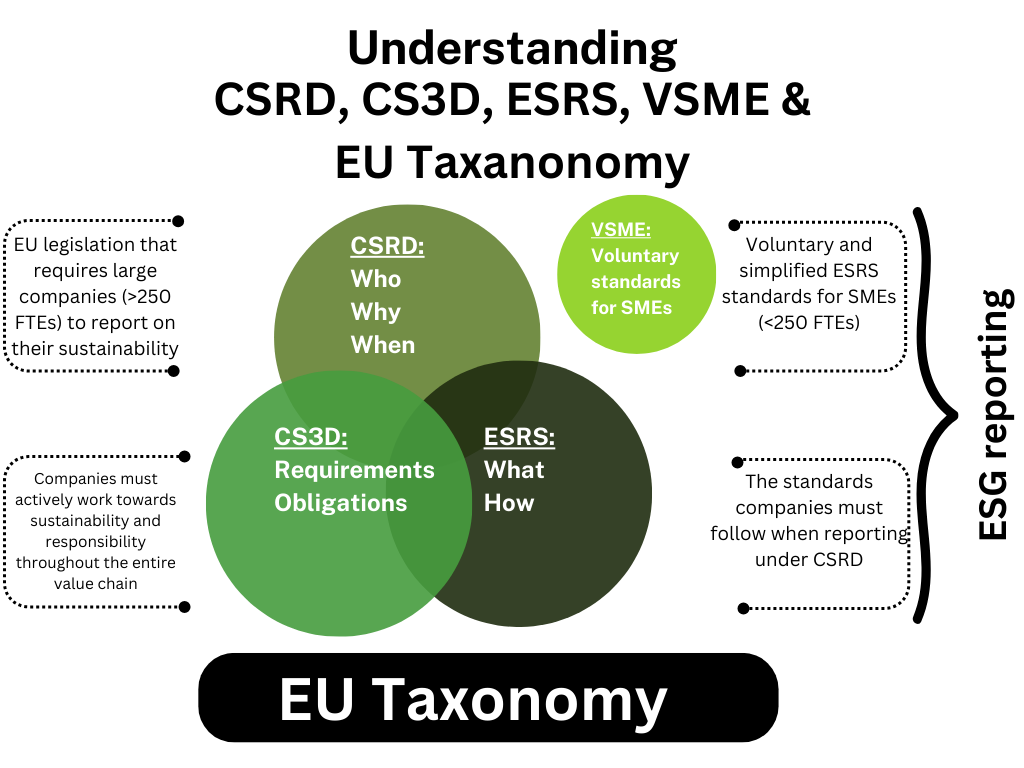
CSRD (Corporate Sustainability Reporting Directive) is an EU legislation that requires companies to report on their sustainability activities, such as environmental impact and social conditions. It expands previous regulations, so that more companies are now required to report.
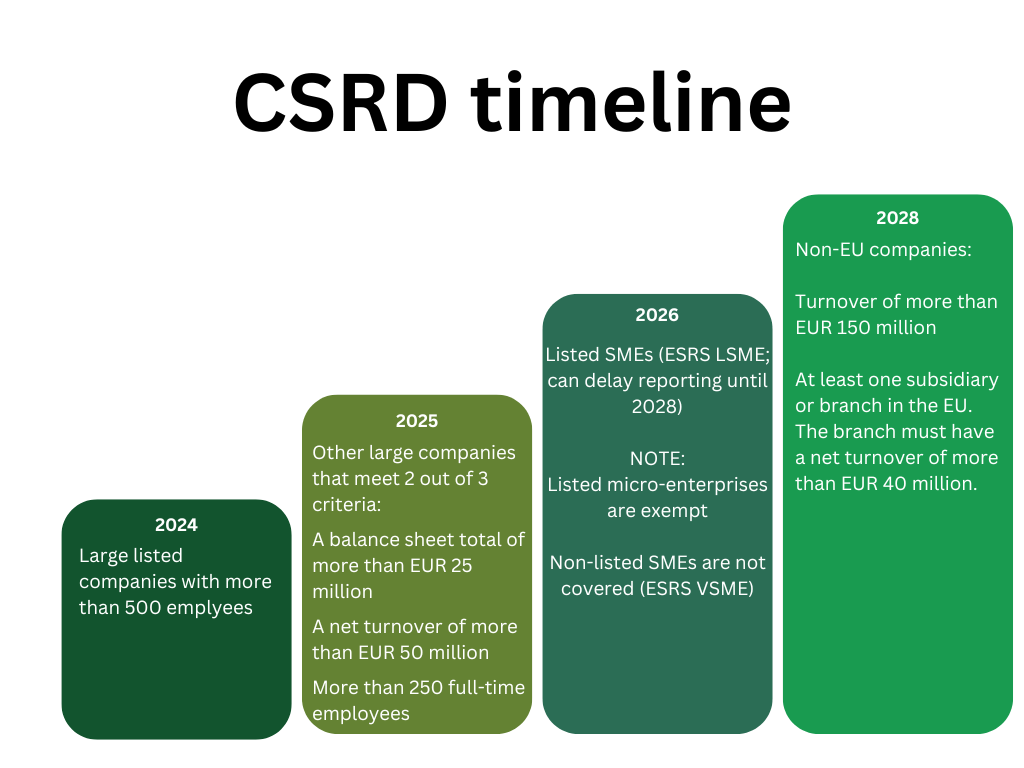 For large companies—particularly publicly listed companies and those with over 250 employees, a turnover exceeding 40 million euros, or a balance sheet total exceeding 20 million euros—the reporting requirements are extensive and detailed. The CSRD expands previous regulations, so that more companies are now required to report, and the requirements gradually apply to more types of companies.
For large companies—particularly publicly listed companies and those with over 250 employees, a turnover exceeding 40 million euros, or a balance sheet total exceeding 20 million euros—the reporting requirements are extensive and detailed. The CSRD expands previous regulations, so that more companies are now required to report, and the requirements gradually apply to more types of companies.
For SMEs, the requirements under the CSRD are more lenient. This point will be elaborated on later.
ESRS (European Sustainability Reporting Standards) are the standards that companies must follow when reporting under the CSRD. They specify exactly what information must be included in the reports, such as on climate, social conditions, and governance.
CS3D (Corporate Sustainability Due Diligence Directive) requires that companies not only report on sustainability but also actively take responsibility for human rights and environmental impacts throughout their value chain, including suppliers.

ESRS is divided into two main categories:
- Cross-cutting standards: Cover overarching topics such as governance, strategy, and risk management.
- Topic-specific standards: Cover specific areas such as climate, social conditions, and the environment, and are tailored to the company's size and sector
Additionally, sector-specific ESRS requirements are on the way. These sector-specific ESRS requirements are future reporting standards that will be developed to address the specific sustainability challenges and opportunities present in various sectors. The sectors include:
- Oil and water
- Coal, quarrying, and mining
- Road transport
- Textiles, accessories, footwear, and jewelry
- Financial institutions
- Agriculture and fishing
- Motor vehicles
- Energy production and utilities
- Food and beverages
For small and medium-sized enterprises, the requirements under the CSRD are less stringent and less extensive.
ESRS VSME (Voluntary Reporting Standard for SMEs) is a simplified version of the ESRS requirements, specifically designed for small and medium-sized enterprises to make it easier for them to meet the standards' requirements. ESRS VSME is currently voluntary to follow.
ESRS VSME falls outside the mandate of the CSRD and is driven by the market's need for a voluntary sustainability reporting standard for non-listed SMEs and micro-enterprises, aimed at helping them meet ESG requirements from banks or partners in their value chain.
Currently, work is being done on:
- Basic module with 12 overarching disclosure points.
- Narrative module with 5 overarching disclosure points.
- Business partner module based on the SMEs' business partners. Note that a double materiality assessment must be conducted to comply with the rules for expanding the module.
In addition, ESRS standards for publicly listed SMEs are being developed. These are called ESRS LSME.
ESRS LSME (ESRS for Listed SMEs) stems from the CSRD, which mandates EFRAG to develop a simplified standard for publicly listed SMEs, small banks, and captive insurance companies. It is an exception to the sector-independent ESRS and will be adopted as a delegated act by the European Commission.
Overall, the CSRD and ESRS require reporting, while the CS3D goes a step further by demanding action and accountability in the value chain.
The EU taxonomy is connected to the CSRD, ESRS, and CS3D because it helps companies meet their reporting requirements. Under the CSRD, companies must report on their sustainability, and the taxonomy indicates what is considered sustainable. The ESRS explains how the reporting should be done, while the CS3D requires companies to ensure sustainability throughout the value chain, also utilizing the taxonomy.
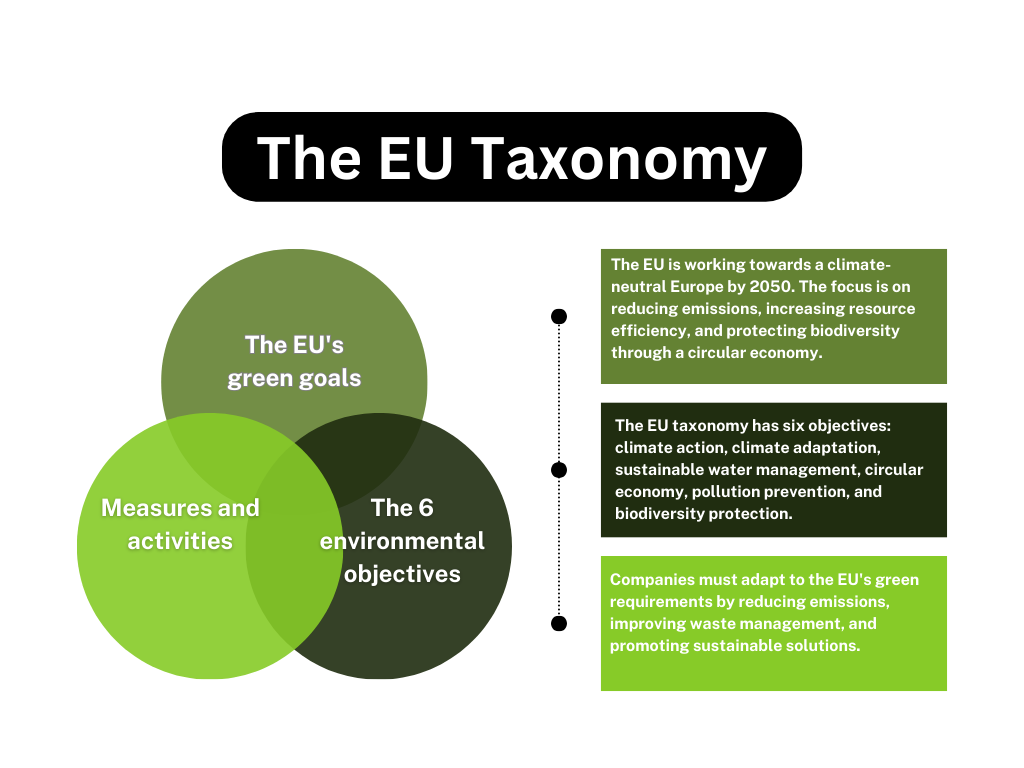
The EU Taxonomy is a common classification system that defines which economic activities can be considered sustainable. It serves as a guide for companies to identify and report their environmentally friendly activities.
Sources: EFRAG and Virksomhedsguiden.
September 2024 version 3.
What is a GAP Analysis?
GAP stands for "Gap Analysis Process"
A GAP analysis is a systematic method used to identify the difference between a company's current performance and its desired goals or standards. The analysis helps uncover gaps between existing practices and requirements, such as those set by CSRD or ESRS. By understanding these gaps, the company can develop an action plan to close them and ensure that sustainability or compliance targets are met. A GAP analysis is therefore a valuable tool for improving efficiency and ensuring compliance with relevant standards.
CEMS Liability Insurance
CEMS Liability Insurance covers Commercial Liability, Product Liability, as well as Ingredient and Component coverage. The insurance also includes professional liability insurance for IT companies, Legal Assistance, and Cyber Insurance, which also covers online banking. The insurance is underwritten by IF Insurance under agreement number SP5547880.1.1.
The idea behind CEMS
Lars Thomas Kristensen the idea behind CEMS-Climate ESG Monitoring System. Lars Thomas has been working with CO2e reporting for more than 20 years, and has been a co-founder of a Social Economy Foundation called GOGGS Fonden www.goggs.dk where Lars Thomas has, among other things, worked with CSR and the concepts under S for more than 20 years. Lars Thomas has sat and sits on several boards, where he has gained a lot of experience with the G area over the years.
The work with CEMS started in 2019


























